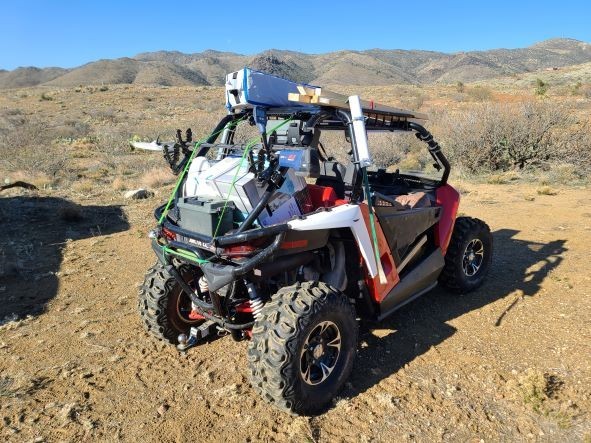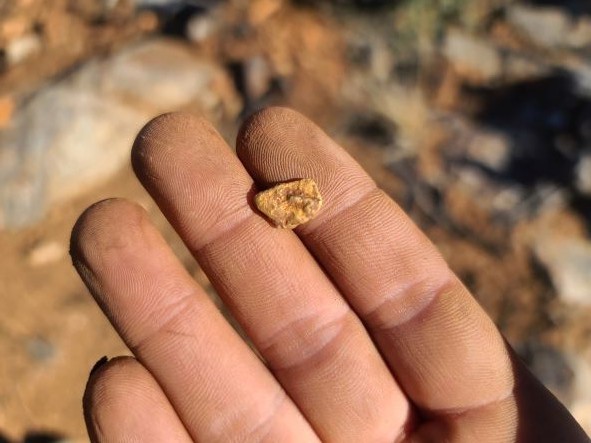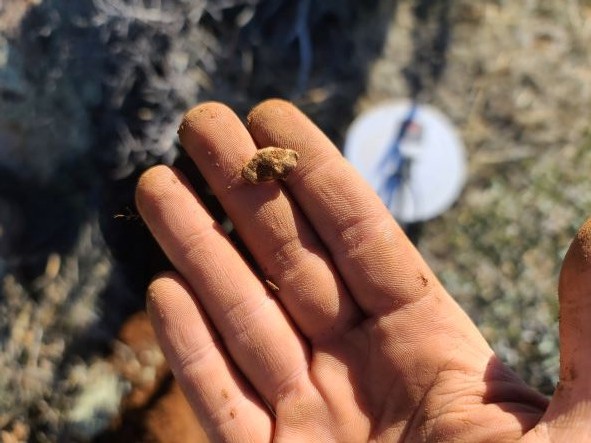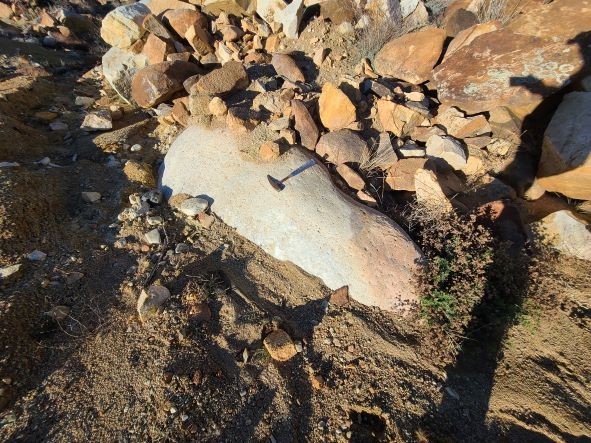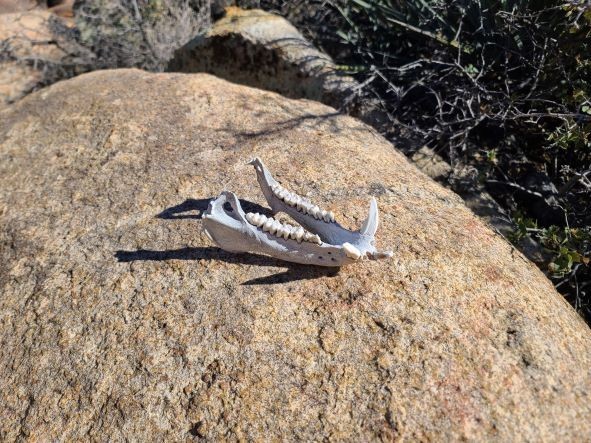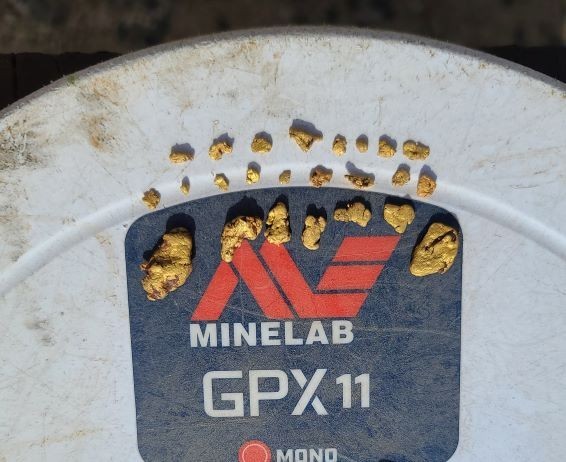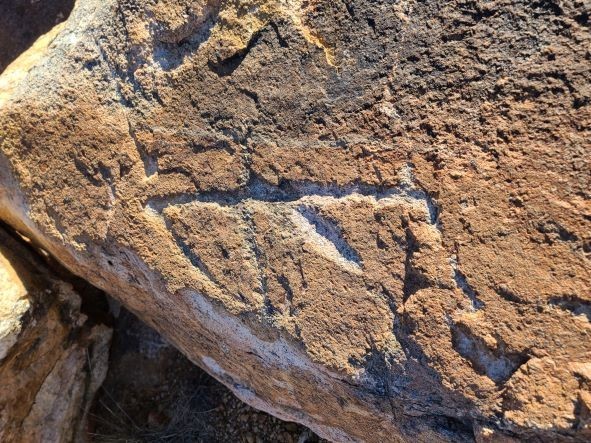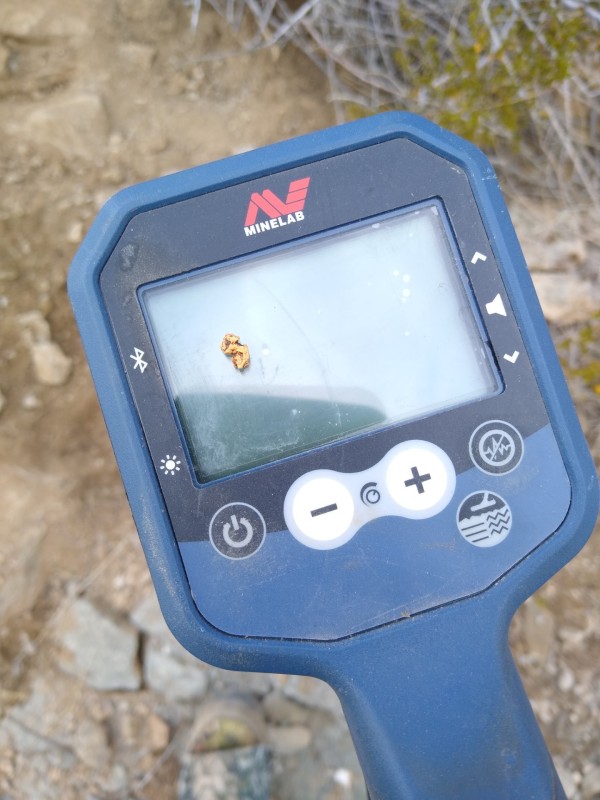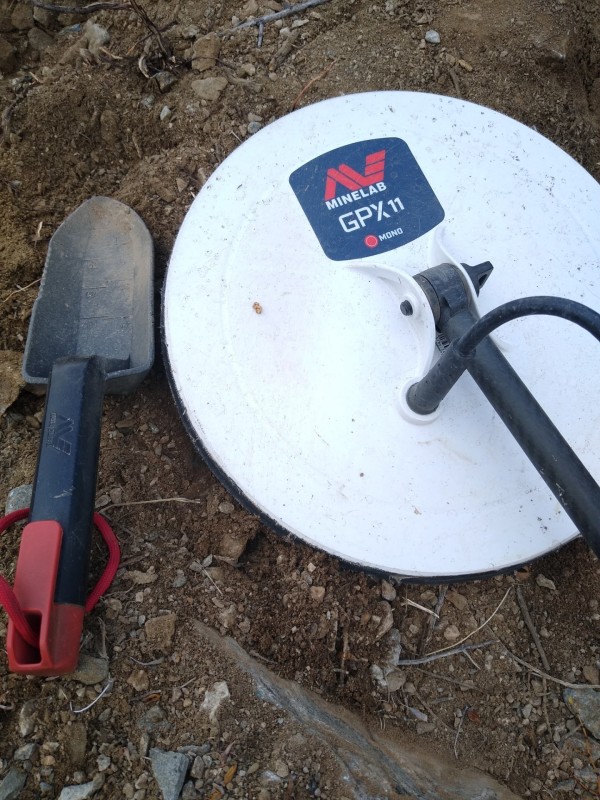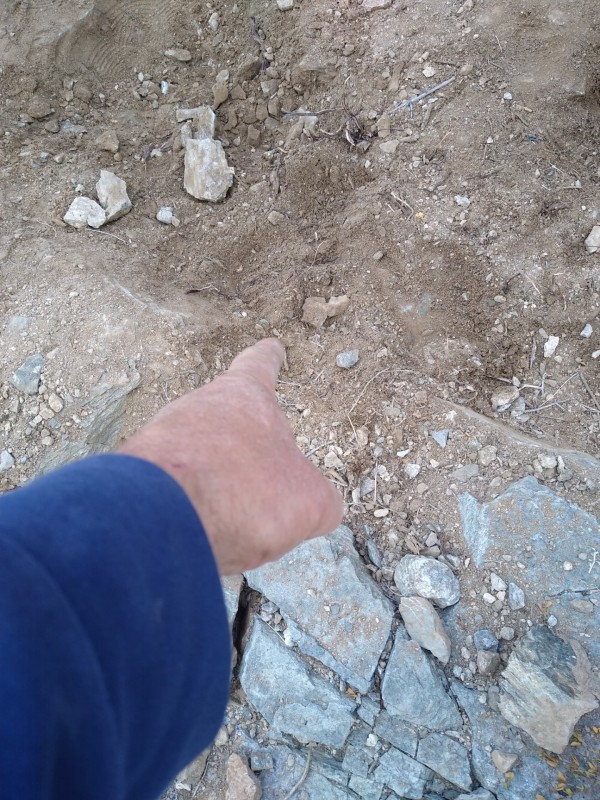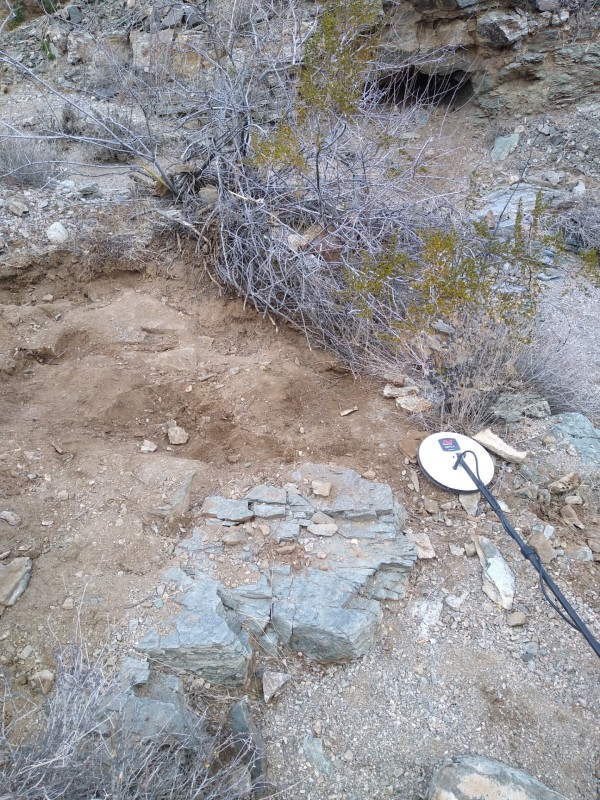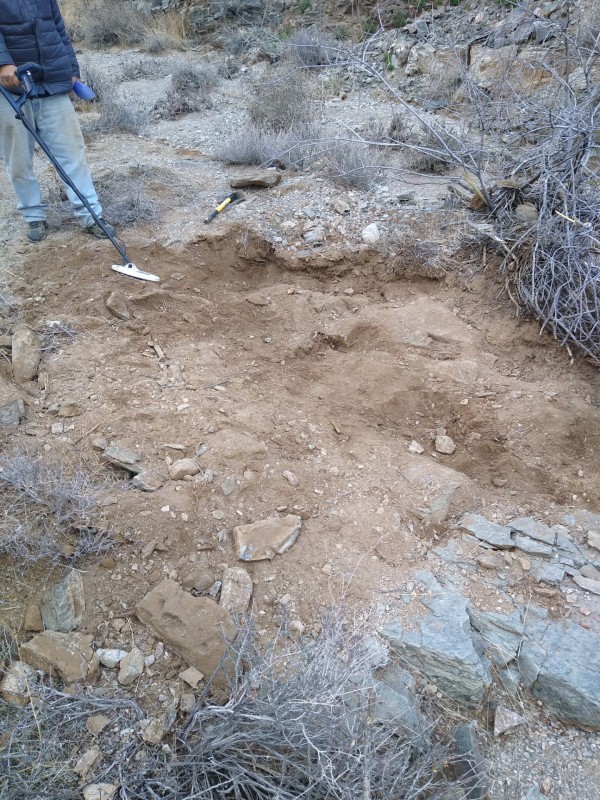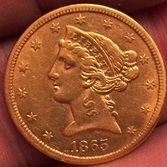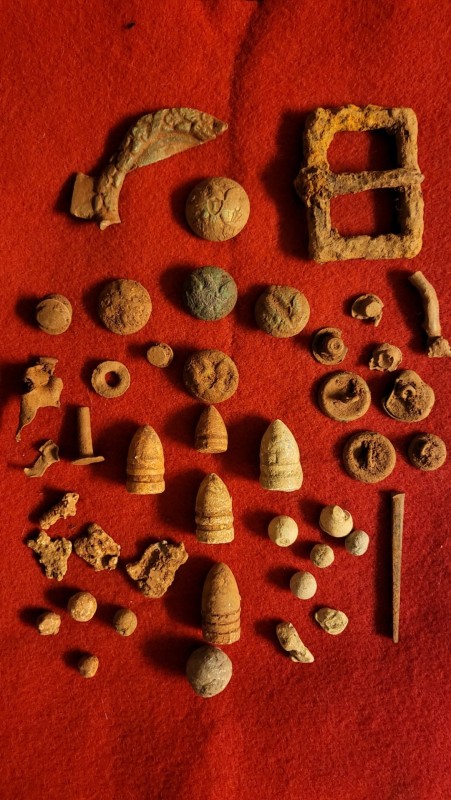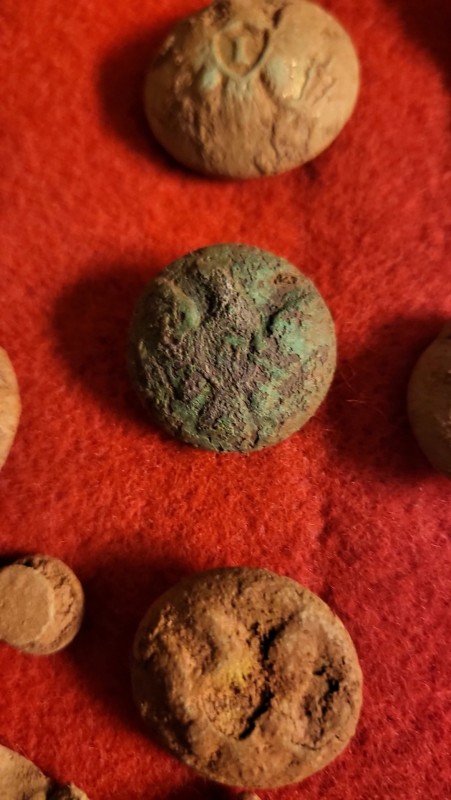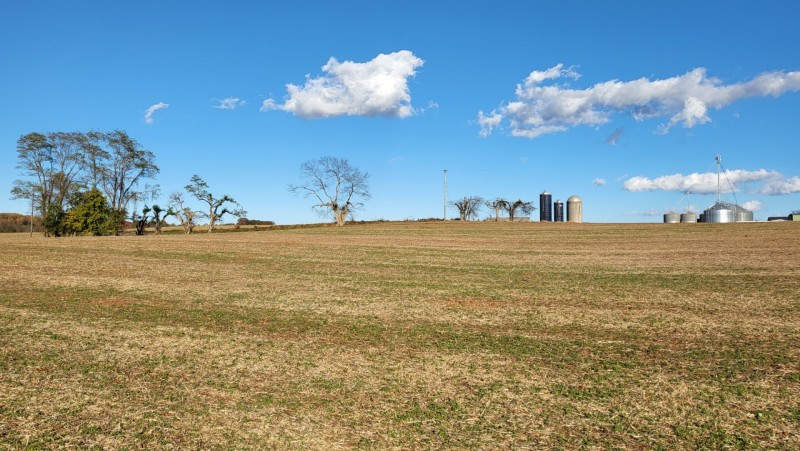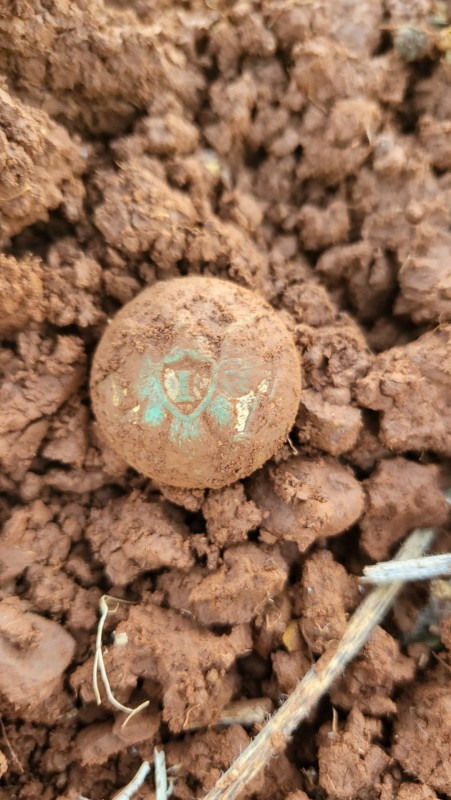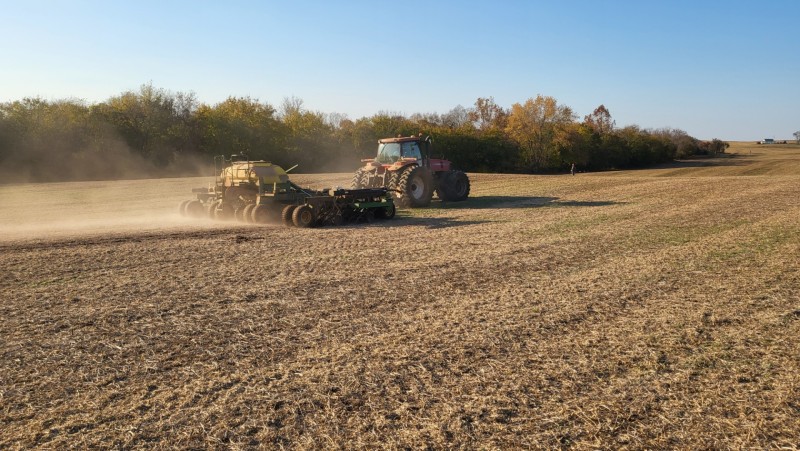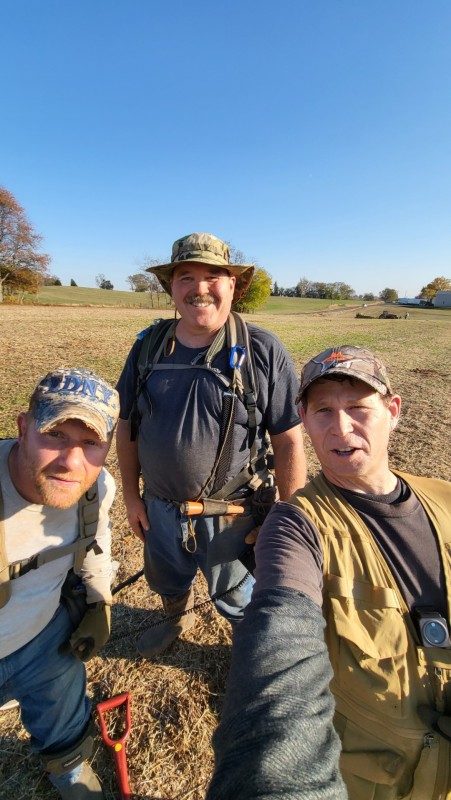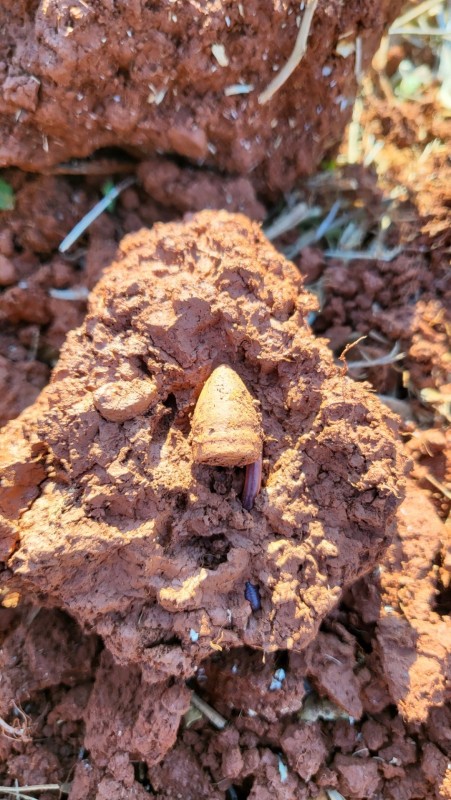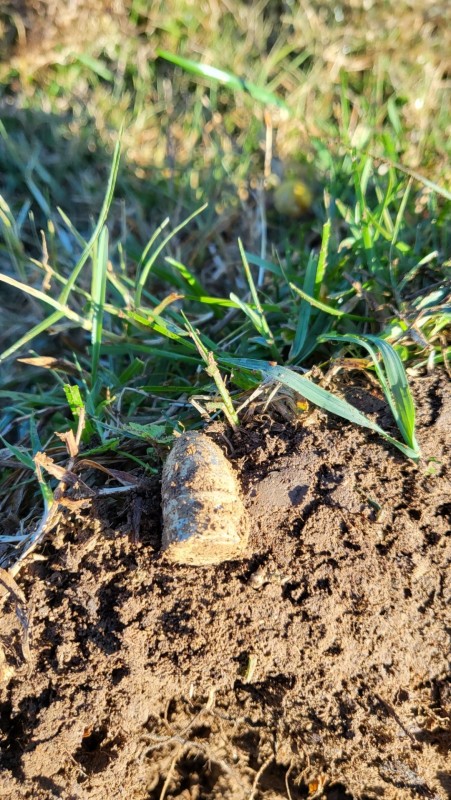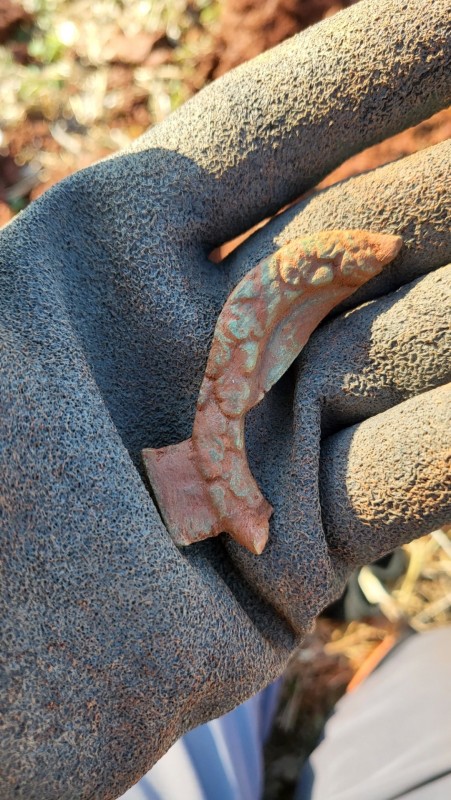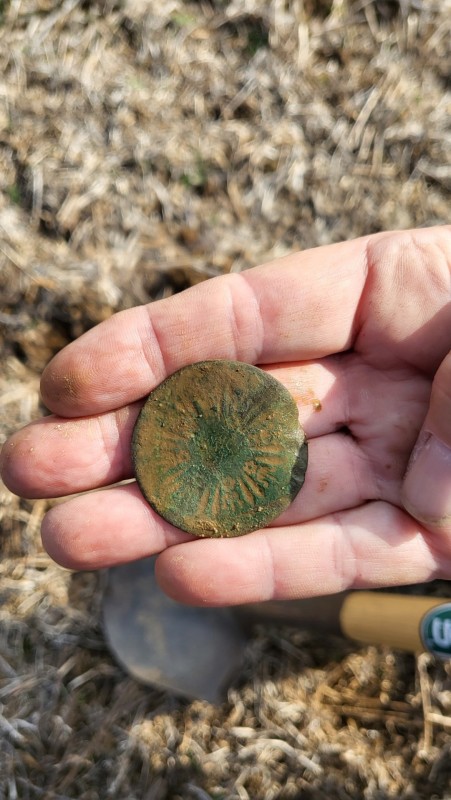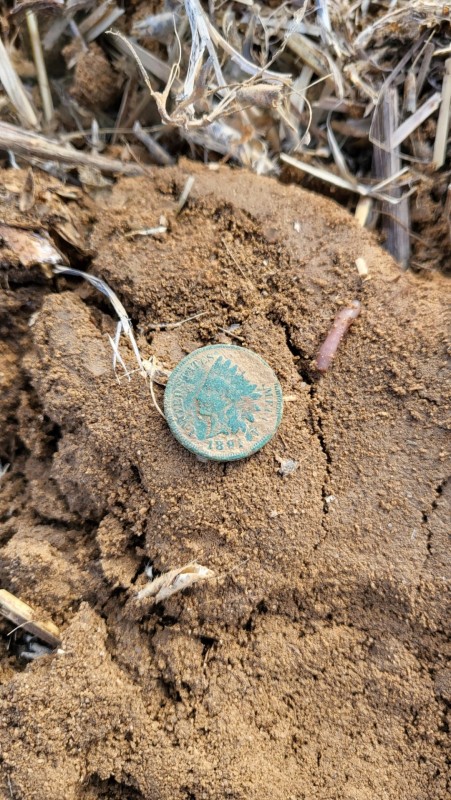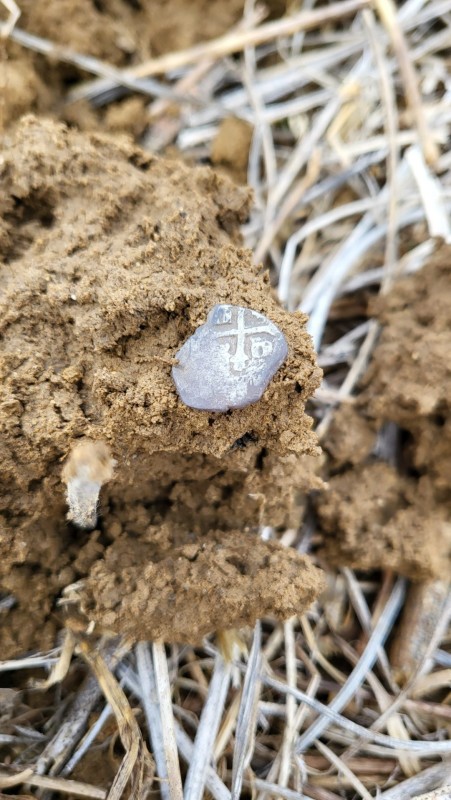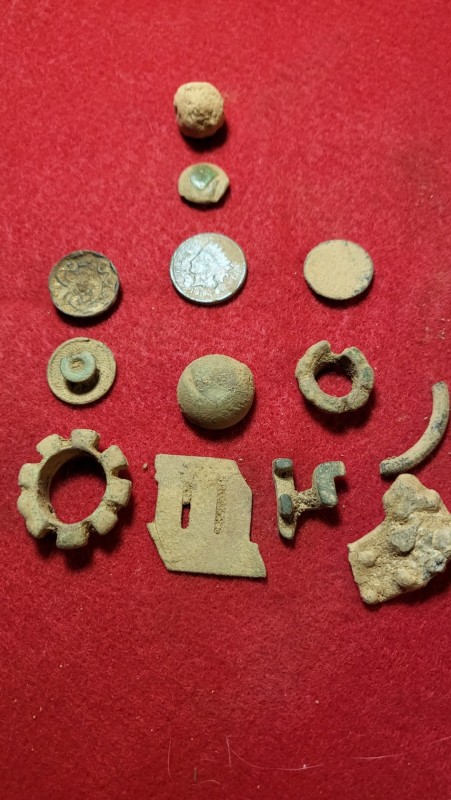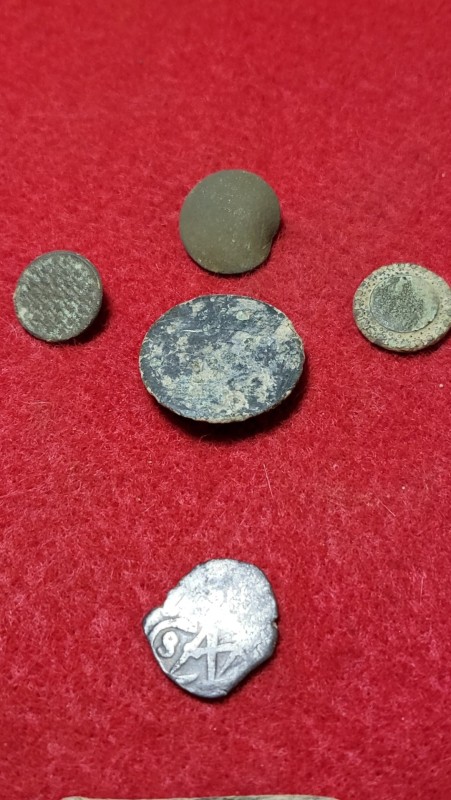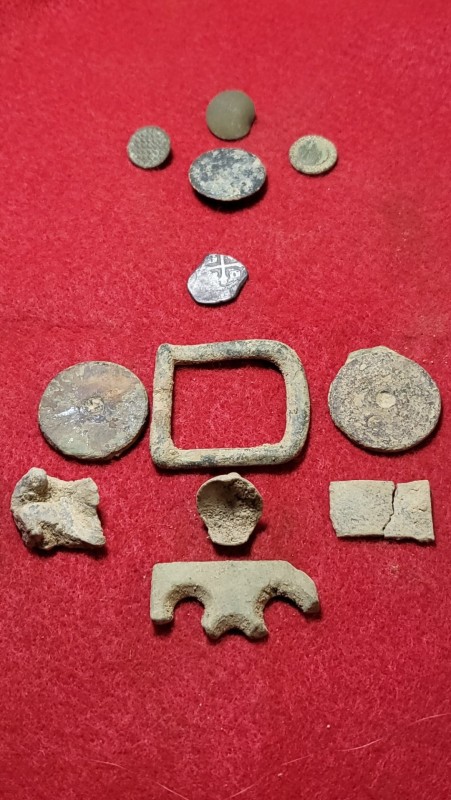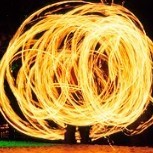Search the Community
Showing results for tags 'stories trips adventures'.
-
I lost my dad a couple of years ago and this is my second Father's day without having the chance to say I love him so I've been in a funk as today approached. The other part of my funk is my own kids are 1200 and 3000 miles away and I get to see them next to never due to one's career in the Air Force and the other who flies for Delta. So with that in mind I got a chance today to get up off my pity party butt and get out there and do something nice for someone. I got a text late last night (Saturday) from a young lady who had lost her diamond engagement ring somewhere on the beach at Rincon Beach Park. She told me that she has only had it for 3 weeks and after waiting 9 years for her boyfriend to finally ask her she goes and loses it. We needed to hit low tide so I agreed to meet her at 7am. Rincon beach is popular for surfers due to it's sweet break around the point where if you catch it right you can get an awesome ride. The tide pools though are just below the surface so it requires skill to just get out to the break! Ashley and her friends were just in front of the houses when a sneaker wave came in and as fate would have it she had just taken her ring off to put sunscreen on and so she gathered up her towel and pulled everything up and away. Logic would lead you, me and her to think the ring fell out right there and I could swoop in and save the day in less than a minute. If there is one thing I have learned in finding folks rings is that the logical place is usually not where the ring is at and today that was the case. I gridded a basketball size court area and came up empty. There was a secondary location 100 yards away that she and her friends retreated to with all their belongings and so I began to search a path from point A to point B. Ashley was beginning to have doubts and I reassured her the ring wasn't lost, it was here on the beach and that we just had to find it. I began to envision the scenario in which it was dropped. She had gathered up her towel and the ring in it, dragging an ice chest to the new location in the dry sand around the corner. I finally got the sweet pitch tone on my D2 and a 42 and I figured this had to be it and then bingo, this beauty was in my scoop. Needless to say I quit feeling the funk and realized that Father's Day was/is the perfect day to do something nice for someone else which is what a Dad does. It was a great reminder that we are to be selfless and put others first. Ashley was crying and man oh man, what a great moment it was. I tried to film it with my new camera but having my hat on made the sky look great but nothing else LOL. I retired last week so I have plenty of time to figure that camera out. Happy Father's Day to everyone and do what you do best! Just being a dad who is there! Dave
-
Last weekend I had an opportunity to go on a club outing to an old mining ghost town site on private land. We had a hunt last spring at a different ghost town, which was my first, and this would be my second. I took the Deus II to test out and the Equinox, which performed well at my first ghost town hunt, as a backup. I had high hopes of doing a little better in the iron and nail infested ground since the Deus detectors are supposed to excel in iron. I used the Relic program mainly and did some checking with the Park and General programs and ran with Notch at 00-00, IAR at 2, Reactivity at 1-2, Iron Volume at 3, and Sensitivity at 96. I was prepared for the audio onslaught of the rapid fire iron and falsing tones, but was amazed at the stability of the Deus. The ground was bone dry from the long drought and iron tones were plentiful but managable and non ferrous tones rang out loud and clear. At about an hour into the hunt, I was learning to recognize the iron falses and nail tones from good tones. And then I hit a very recognizable penny tone and VID at 86. There were a lot of iron sounds mixed in as well but the 86 kept popping through. I imagined it was a large nail or big iron false but since I was investigating all targets, I had to dig it. When I opended the hole, I found a handful of nails, a piece of thin iron strapping and laying among the clutter was an unmistakable penny shape. My first thought was how did a Zincoln get down that deep? When I pulled it out, I was looking at a 1911 Wheat penny! I couldn't believe it. That was the oldest coin I have found in my 2 years of detecting in Colorado so I was pretty excited. The next day we were out at the site for a few more hours. I had been all over the place the day before like a dog looking for a bone, but decided to go back and work the area where I found the wheat penny and then it happened. I was almost hypnotized by the constant low hum of iron when an unfamiliar but solid 50 popped through. I thought it might be another button or piece of jewelry or something and then I saw something amazing in the hole! Another first for me! I know these things may seem trivial to you more experienced detectorists, but but this is like the Holy Grail to me. I never expected to be able to find something like this and now I feel like I actually can. More than that, I feel a little more like I'm one of you. I must say I am even more happy with the D2 as I learn it more and I believe it's good reputation in iron is well deserved.
-
Sorry, another corny title 🤣 I went back to the field where I dug the half-half real a couple of days ago. It was a cool and fairly windless day, I wanted to see what else was there. Up by the highway there are power lines and huge transformers, my poor Equinox would suffer greatly near the road, so I brought the Deus 2 again. Even the Deus was affected slightly the closer I got to the road, but that's where all the beer cans, foil and slaw are. About 30 feet in things improve greatly. Despite the slight EMI the Deus can lock onto a target with little effort. This is a small field so I figured 7-8 hours would cover it. It's wide near the highway but curves off to a small field off to the left. I want to show y'all a really cool seat you can strap around your waist so you can take a break without ticks or chiggers getting you on the ground, I've seen Chase with one and my fabulous wife gave me this one: It's about 2" thick, and the size of a Frisbee, maybe 10" in diameter. You pop it open and twist it slightly and it will hold 300 lbs! Great if you need a break in a big field. I walked all over this field and got a handful of relics: Most of this stuff is very old. From top left, a rein guide, it is cast with figuring on it, some part of fancy horse tack, a small brass triangular object, 7 buttons. The buttons range from a large Dandy to two Tombacs, 3 breech buttons, and what may be part of a 2 piece, it has a star like design with possible silver plating in the crevices. A boss of some kind, a large lead ball with a hole in it, spectacle buckle, 4 lead objects that are mostly rifle/pistol/buck and a lead bag seal. The third brass knob I've found here, and some sort of threaded brass finial. The Dandy also has silvered highlights: It appears to have 12 sides, but it's very indistinct. One of the Tombacs is highly figured as well and sadly broken: And the oldest find of the day was this spectacle buckle, it was about 8" deep. They date back to the 1650s. I got 3 coins today, a 1970 and 1974 memorial, and a 1909 wheat that I can't make out much else on. 😵 Finds to trash was great today, I'm really getting used to the "tonal nuances" of the Deus 2, and able to distinguish most deep iron falsing. A small amount of iron, buck balls and other junk.
-
This is a special thread I am starting. It is my story up to now at our claims & Jed's dig site. The gold strike was a real event in 1936 and the exploration following over time is covered in the book. Here I want to convey my own experiences and adventures at The Whiskey Jack Mine and claims. I have kept my own journal concerning activities and events there. It is not a day to day and some of it is written after the fact from my recollections. It starts in 2012 and may give some hopeful prospectors and miners an insite into gold exploration and the ups and downs associated with it. I hope you will enjoy it. Cheers - G.M.
-
I've been scatter shot prospecting in the Rockies on my ATV, 20-40 mph winds constant. Normally 50 degree is my ideal prospecting temperature, but in winds like this it can be uncomfortable. It's a struggle to hear signals even in headphones in this kind of wind, but doable. There is very little written mining history, and not much geologic mapping and reports available in this area. This is one of long list of places closer to home which I've spent over a decade researching and compiling information on, to explore during free times like this when work and health aren't preventing me from going to the field and it's too hot to prospect down south. In most cases, my coil is the first to touch the ground here, so where there is gold around, it's almost all very easy targets. The ground is pretty mild here too for the most part, just how I like it. Auto+, easy sailing. Locate gold bearing areas, move on to the next. Quick, tactical prospecting...bring the 15" concentric X Coil on the GPZ in later when I want to find the deeper (and conceivably larger) pieces in the deeper soil. This is the type of prospecting and exploration I truly love. And finally I have a machine in the 6000 that makes it easy - no rig up/rig down time. I can drive my ATV until I see good topography and gravels, be detecting in 15 seconds, then throw the detector back on the rifle rack and be moving on within seconds again, until I see somewhere else favorable looking and do it over. My dog thinks I am reaching for beef jerky whenever I set my detector down. He wasn't too happy to see a camera instead. I got him in 2012 and he has been on every single detecting and dredging trip I've ever taken since then. If he can't go, I don't go. Meanwhile, I've yet to convince any of my non-prospector friends to come out with me even once! Some of these cracks in the bedrock hide nuggets. But sometimes they are just hanging out in the grass roots, or in the soil right near surface too. 25 for the day (one is hiding, mostly covered by the wide boy). I like when things work out with nice numbers, so I chose to stop at a pleasing place. I also think this is the most nuggets I've found in one day, so it's easy to remember. There are many more left, but the gold isn't as important as showing an spot is gold bearing in general to me. I found a few patterns. Have a few theories. My understanding of the area is increasing. Have a bunch more spots to investigate and then I can start searching for the lode sources. A trash shot for Simon so he doesn't feel alone in digging the bird shot. Definitely a few more trash targets than nuggets, but was close to 1-1. Can't complain there. On the subject of trash targets, one thing I would like to see improved on the 6000 or whatever it's successor is, is a faster recovery time. I'm finding it quite difficult to use in trash, especially shallow trash, due to how hard it hits, and then stays "hitting" long after the coil has moved away. In places with lots of shotgun pellets or tinslaw bits, this can make it quite difficult to try to work through the trashy spots. And separately, while I mentioned it in another thread, I really do feel like there is some "bogging" down happening in the electronics at random times that is causing me to not just miss targets in my scoop, but in the ground too. Unless it really just is so directionally sensitive that being off on a swing by a few degrees is the difference between hearing a target and not. Anyways, no product is perfect, and I'm glad to finally have a lightweight, quick machine to use with almost no rig up/rig down time. I got close to having this with the GPZ and 8" X Coil, which thankfully showed up at the perfect time to save my elbow from further damage and I'm very thankful for, but the 6000 just is one level quicker still and requires less "stuff" to tote around, so it's my main machine. I do feel the 8" X Coil does better in heavy salt still though, and the 15"/17" concentrics blow the 6000 out of the water when it comes to depth, bar none. I'd sell my GPZ and just stick with the 6000 if it wasn't for those two coils.
-
This is Day 2 of my trip to Nevada with Steve and Steve. On day 2 after having some gold in the poke we decided to pull out the VLF's for a while in the trash to see what we could find. The Legend was running version 1.06 which I later found out had issues and noticed the machine was running kind of funky at times. But still managed to pull a small nugget with it. Wasn't long before I went back to the GPX 6000. Love that machine, never thought I would own one but now that I've used one I think I'm going to have to get it.
-
Rye Patch, Nevada. It’s the place so many prospectors dream about the chevron golden riches and yet so few actually succeed. The openness of the RP desolate dry desert has it’s own natural beauty with some amazing features when you pay attention. Yet at the same time the exact site poses the most unexpected of weathers, frustrations and or failures. In reality, Rye Patch area is a love/hate relationship for many. My Field Staff and I recently returned from our 1st of three Rye Patch Nevada Field Training/Camping Adventures. The 3 day weekend (Friday – Sunday) was surrounded by like minded folks who want to learn their gold detectors and how to be most proficient. Class size was subject by the amount of Staff I had present and we had to keep 3 eager students per Field Expert. Here’s a run down of how our 3 days unfolded and the knowledge shared/gained by all attending. Getting to RP is actually quite easy (if you are prepared for the unexpected) and one of the main reasons I prefer to train there is location. It’s kind of centrally located for the most of folks attending as many of the customers are coming from CA, OR, NV, ID and WA all though I have had customers from all over the world. Sacramento, CA and surrounding cities are an easy half day drive. Las Vegas, NV and Eugene, OR are both about 8 hrs. Salt Lake City is approx. 6 hrs and my home of Boise, ID is jus under 6 hrs drive as well. So many people from larger metro areas of surrounds states can all do RP in a day. We always have the few exceptions of distance folks and for this trip was Loren from Gig Harbor, WA., Steve from Zortman, MT., Mike/Sally and Maria from Colorado. The latter travelers had 11 hrs drive to the RP oasis. If you are prepared? This is part of the complete Northern Nevada eco system that makes it so adventurous in good/bad ways. In my 25 yrs of pointing folks to RP and Northern NV., I try to help get them prepared before they leave their home and start the trek to my stomping grounds. I have detailed directions, list of things needed and what to prepare for and or expect. It seems a good part of the class listen wisely and take proper protocol and then there are the few who enjoy winging it. Yes the thrill of “spare of the moment, off the cuff, just go do it”, is kind of exciting in a way, but at the same time could be a relationship nightmare. Actually the latter is very true as I’ve witnessed a few spats or a dozen in my times. I’m assuming part of the party was shared my notes of knowledge and then part of the family was not? Hazards of RP- Holy flat tires. Yes some folks will get one, a few maybe 2 and on a rare occasion you become the tire changing king. Just ask Steve who drove from MT. I passed him along the main road below camp coming in that Thursday evening. I could see a rig attached to a camp trailer pulled off the side and figured it was another of my students. Sure enough, as I inch up closer (don’t want to cover him with desert dust – fine tan power that ends up in every crack and crevice of our truck, campers, electronics, and even orifice of the body) I can see a flat tire on the trailer. I introduce myself while checking the scene and after affirming my hunch of it being one of my students. I calmly ask if he took heed of my tips for the trip notes. In it is, “please carry 2 spares, a jack and know how to change a tire”. Yes, Steve said and then went on to inform me that was flat #4. That’s right folks, Steve was changing the 4th flat tire and he had not even reached the class site yet. To be fair, he was only 2 miles away though. Yes, Steve is a Tire Flat Fixing King. His wife who was sitting in the passenger seat of the truck, I can only imagine….what a fun and exciting trip this is.. Hats off to Ma’am. The hazards of RP vary as much as the temps from day to night with occasional bigger swing than most realize. We started off Friday morning around calm 40 degrees and sunny. Heck one of the students was in shorts already. The noon break showed the high desert sun was more than a few expected as we were slapping the sun screen on cheek bones, legs, arms and nose tips. By that afternoon the temps reached 80 degrees and a cool water was a must. Come Saturday morning and we had a change of heart and 27 degrees with 20 to 25 mph winds and gusts of 35. No bear skin that day and all desire of a cool drink were denied while we looked for hats, scarfs, gloves and warm coffee. I realized 3 rigs had those fancy tents that come off the back of your trucks and all were near by that 1st Friday night and Saturday morning. But on Saturday evening not a one of them was near? Probably pretty wise, as the 19 degree morning on Sunday was a tough one for us. Snot rags, chapped lips and chattering teeth was the norm Sunday morning and all I can say is we were lucky the winds were not around to make it even worse. Around noon things turned to decent and the folks started to enjoy themselves in the NV desert again. We have no control over the weather so when I pick dates many months in advance and customers sign up to lock in those dates, we just have to go with the flow. Now for some smiles, a little gold and the fun. Of the 12 folks who were hanging around the class and learning what my Staff/I had to offer, all but 3 went home with a Rye Patch nugget (piece of gold). Yea I realize some of them were little picker nuggets, but to go home with gold is much better than going home with no gold. I make sure everyone realizes the purpose of the class is education and to not expect gold. If it happens, then you are doing things right and it goes to show you paid attention. The big winners of the weekend were the girls who attended the class. 3 ladies and all 3 dug gold. Sally was the Big Nugget Winner with a stunning 8.6 gram slug of gold. Her GPZ-7000 had no issues smacking that one about 10” down. We tested the GPX-6000’s and they screamed “Golden Glory” at the top of their lungs as well. On a side note, this is the biggest nugget to be unearthed during a training session in at least 5 yrs. Well done Sally and I heard the 2 of you ended up with over a dozen by the time your trip was over. Local lady Diane (below) from Winnemucca was on her A game over the weekend and her 3 nuggets proved she had the proper coil control down. Diane saved the best for last and the nicer nugget of about 1.5 gram. The last day Maria (below) from CO was able to pull a decent nugget at depth nearing 10”. Funny thing was the GPZ-7000’s had issues with this nugget and gave a goofy wishy washy response while the 6000 was smooth a s butter clear and clean. The lone GPX-5000 had not chance on the target until we were much deeper in the dig. No VLF machines could hear it as expected. Some of the other students with their 1st gold of the trip, a couple 1st gold ever and so they were all smiles. I too was able to pop my cherry for 1st gold of 2022 and of course as expected it came from Rye Patch. Steve (above) from MT was able to ease the pain of his pocket from 4 flats after he scored this chunky nugget. Andrew (above) from CA is proud of his GPZ-7000 nugget. I know more will be coming his way. Boyd (above) from Oregon was quite relieved when on Sunday morning he popped the GPX-6000 cherry. Loren (below) from WA hits a nice triangle piece at RP with his 6000. Randy (above) is proud to show off his 2 ounces of NV gold he uncovered with is GPX-6000 in less than a yr. He came to my class last Fall and has been scooping gold ever since. Another ounce (probably only take him a few more weeks) and he'll have his GPX-6000 paid for. Spencer (below) thinks the buggy can go anywhere. That mud hole is the only thing left of Rye Patch Reservoir which happens to be the lowest I've ever seen in my 25 yrs. . Sorry I did not get pics of George from Idaho and his gold with his GPX-6000 as I know he found at least 3. The overall results were as expected. The GPX-6000’s found the most pieces of gold. A couple of the small nuggets at depth, the GPZ-7000 did not hear at all. The old school and proven many years over GPX-5000 did not score gold, but was able to pop a strong signal at depth over the 8.6 gram slug Sally found. The lone VLF had issues with the moisture and many times we could not get an exact ground balance on it. Plus, it was running the larger 11” round coil when in fact I would have preferred the operator to use a smaller 6” coil to up his odds. Moral of the story on the detectors for Rye Patch is not going to be the same for other areas in NV or even for sites the customers themselves may be detecting in their states as each site varies. But as I new would happen for RP, is the GPX-6000 is the bread winner and will continue to be the nugget collector of machines for the near future. Yes the GPZ-7000 can still find gold at RP for those are on their A game and know the area, but when comparing signal after signal and target after target, the GPX-6000 walks away quite easily. A prime example of this is Mike/Sally from CO. They own both and swing both each day trading off machine the next. Mike’s comment to me was the GPX-6000 scores 4 or 5 nuggets to 1 on the GPZ-7000. Happy Hunting folks and we look forward to another eventful and fun filled session coming up in June.
-
Well, my first wintering in Arizona hunting gold has come to an end and this past Monday I headed back to Montana to hunt gold in the next goldfield- Radersburg, Montana. Gold Basin was very tough finding gold consistently and the decision to move twenty something miles to Meadview was good and productive. Will I go back next winter? Perhaps, if the money from gold I find up to this September or October is productive enough. Living out of my small Tacoma and a bell tent in Arizona deserts next to the West Rim of the Grand Canyon was challenging and difficult at times thanks to high winds on a regular basis. The gold under my coil happened alot more frequently at Meadview. New strategies I thought up and employed proved very effective and it is now proving effective the very first day detecting at Radersburg with one beauty of a nugget at 10"-11" deep resting on bedrock. My first day at Radersburg was spent getting camp set up and my stove put in place in my bell tent, then going into town to get a months worth of supplies to hunker down and start detecting. After an incident in Meadview at one of the GSSN claims, a nervous looking guy trying to intemidate me with a pistol at a patch of nuggets I had just found, I decided to get a pistol. My choice was a Taurus Judge 45 Long Colt/410. Finding ammo for it is proving difficult. My gold finds at Meadview came on strong and stayed that way till my last day of detecting the evening before I left for Montana. My gold tally was 50 nuggets and a total weight of 16.47 grams. Not too bad for first hunt in Arizona in an area absolutely pounded to death for decades. Detecting at Radersburg is going to be a little slower recovering targets as you cannot conduct a boot scrape due to prairie grass and lichen root systems covering the ground everywhere. Bedrock is shallow and I will most definitely seek out areas where the bedrock is between 1 foot to 2 feet deep as I now know the Gpx 6000 has no problem hitting on gold at these depths. The second from the last day in Arizona I swung the 17" coil over the top of a gravel bar behind a bush in the middle of a wash and I got a faint low elongated growl that was totally different from all other signals I have gotten with the wild six. It was constantly repeatable so I dug and pulled up a .63 of a gram nugget at 15" deep. I measured the hole with a tape measure and this knowledge amazed me. The next day I completely removed a foot of overburden on the gravel bar and hit another nugget weighing .4 of a gram a foot to two feet away directly behind the bush. The last nugget, number 50 was a bitter sweet way to hit my goal of 50 nuggets with a 1.1 gram nugget at a foot deep. Yesterday being my first day detecting at Radersburg ever, started out slow with nothing but bits of iron and bullets. I took a few hours off to eat lunch and cut a tree down to feed my cylinder wood stove in my tent for the coming chilly weather still lingering. I then went out for a late afternoon hunt and hit on a .67 of a gram beauty of a nugget. Nice way to start the next month and a half off at hunting for gold full time. Every day my mind is saying you gotta produce, you gotta produce, and you would think that would take the fun out of detecting for gold but that is not the case. Every day as it comes and goes is just as exciting swinging for gold for a living, and living every day without the stress of having to run the mouse wheel to stay afloat in today's society, with rent/ mortgage and other bills. My Jackery 1000 and my Iceco 60 Ltr fridge/freezer is running flawlessly and I can run my fridge, charge my phone, my detector batteries and headphones as well as power my computer all at the same time and not run out of free power. It was well worth the initial investment. I will keep you posted of nugget finds to come and I will get a good photo today of the Arizona gold tally.
-
While prospecting in the Jackson Mountains of Northern Nevada, I drove up onto a dirt jeep trail which covered an old abandoned mine beneath the trail that I was unaware had been severely eroded and undermined by water from a creek that flowed just beneath the surface of the ground. As I was driving over the top of the mine, the roof collapsed and the rear wheels of my pickup truck fell through, slamming down hard onto the axle. Fortunately, I was towing a backup vehicle and after winching my truck/camper out to a secure spot, I carefully looked down about 10’ into the gaping hole, where I could see an old rickety wooden ladder leaning against a wall. I proceeded to detect the area and dug the usual mining trash but didn’t find any gold. Farther downstream, I found several old expended .50 Cal brass casings and a partial belt of live ammo. Apparently the mountain range had been used for military exercises at one time. Although, It was a good looking area to prospect which I had planned to go back to, unfortunately, it became a wilderness designated area. ☹️ The Jackson Mountains are located in Humboldt County, 56 miles west of Winnemucca, Nevada. Access can be reached from Winnemucca by taking the Jungo Road west for 35 miles to Bottle Creek Road. There are 2 Wilderness Protected areas in the Jackson Mts. North and South Wilderness, divided by Trout Creek Road.
-
While nugget hunting in the Bradshaw Mountains of central Arizona, I met a Polish gentleman from New York who was a Gem dealer/vendor who had been attending the Gem and Mineral show in Tucson. He said he had recently found out that it was possible to find gold with a metal detector, and was now out trying to detect for nuggets using a Garrett Ace 250 coin machine. Not surprisingly, he had become highly frustrated with his detector due to the hot, mineralized ground where he was trying to detect. He came up to me and, (in broken English), politely asked what he was doing wrong, since all he could hear was static and popping sounds in his earphones. I said, "Welcome to the Bradshaw's", and gave him a brief explanation about mineralization in the soil, ground noise etc. He had neglected to eat anything in his haste to rush off and find gold, so while he was eating a sandwich I'd made for him, I put away my Minelab, got my GB-2 fired up and proceeded to give him a crash course in gold detecting and let him use it awhile to prove to himself that he could find small pieces of lead, bird shot etc. He was so thrilled, he went into Phoenix, bought a GB-2, came back out and after I helped him set it up, he presented me with a large, beautiful (3 long point), Herkimer Diamond Crystal, and a can of lunch meat! I thanked him and encouraged him to keep trying, then headed back into Prescott Valley to see Kevin Hoagland who, at the time, was managing JW's Prospecting Supplies. Since I was away from home and traveling on the road, I gave the Crystal to Kevin to put in his safe, along with some outdated camera equipment I didn't have room to carry around. Some time later, he casually mentioned that a lady friend of his had admired it, so in the same spirit of appreciation that it had been given to me in, I passed the Crystal on to him for all the prospecting advice and guidance he had provided since the day I first walked into his shop carrying a Fisher CZ6a coin machine, complaining that all I could hear in my earphones was static and popping sounds. He had just smiled and said,"Welcome To The Bradshaw's"!
-
Saturday I was able to finally get out and use my 800 for a little while. I headed out to a nearby park that has been hunted to death by the locals over the past few decades. I mainly went just to get out of the house because of it being a beautiful day and I had been wanting to go for so long. I knew that I would only have a few minutes to detect as I had to take care of my grandmother and cook her dinner. As I had gotten out of my car there were 2 others with their metal detectors on one end of the park. As I was setting up the detector one of them came over to see what I was using. He had never seen a 800 and asked me several questions about it. I told him all that I could about it which was very little because I am just a newbie with them. He wished me luck and I proceeded to get with it. My first 2 targets were of course bottle caps, but I did not give up as I was still having fun out there. I decided to hit up a old tree and got my first good signal, as I started digging the guy came back over again. I had dug down almost 8 inches before the pin pointer caught the signal so I dug down another 3 inches. To my surprise out came a 1957 dime. I decided to recheck the area to make sure I wouldn't miss anything, and sure enough there was another target. That target was about 4 inches to the right of the first hole and not as deep, only about 7 inches deep. The coin was covered in a lot of mud and was a 1967 penny. The guy that came over could not believe how deep those coins were as he said they had covered those same areas earlier. I looked at my watch and noticed that I had to get home, or granny would be unhappy. I was there for a total of 30 minutes, but had some fun. While I was walking back to the car I got another signal that was to good to pass up and had to stop to dig it. This time both people came over rather quickly to see what I had found. As I'm digging the mud was really bad and thick. Each time I would have to scrape off my digging tool or I would be putting it back into the hole. I was down almost 4 inches when it came into sight covered in mud, and one of the guys let out a yell "it's a ring" Yes it was a ring with several stones on it, and quite heavy in weight. They were more happy than I was it seemed as they were jumping up and down. As I poured some water over it I realized that it was a cheap ring, pretty but cheap, one that you might buy a child. Anyway I had found my first ring and I was happy. I must say that for just the 30 minutes that I had spent out there it was still very nice to be there. Hope to be able to go again soon. I was using the 800 with all factory settings on Park 1, the sensitivity at 20, and using the CoilTech 10X5 coil.
-
Finally got out this morning for a long over due hunt. I meant to go for just a couple hours to an old town site that I and others before me have hounded for decades. I figured I'd use the Deus with the hi frequency coil in deep mode x/y graph and dig everything non ferrous hoping for a small gold coin...there are still plenty of non ferrous targets in the ground however high conductors are very very rare at this place. So off I went up on a hillside that I have found some good stuff in the past with the Deus and started banging away. The sun was up and warm at 8:30 am and the the cows were already looking for shade. Head stamps, small bullets, bullet casings etc I dug one after the other but I kept on digging...after about an hour and a half with sweat in my eyes I said to myself what the hell am I doing here? I got stuff I should be doing at home rather then screwing off digging junk. Since it was too early to just give up I decided I'd put the 11" coil on the Nox and go for a long walk in a big field. I've made several attempts in this field in the past...it's off the old town site but close enough to investigate. I was looking forward to some quiet detecting out of the iron hoping for a needle in a hay stack find. About 2/3 into the field and after a few more head stamps I get a real nice 24-25 on the Nox loud and clear. Probably a small buckle I'm thinking with my defeatist attitude.. then what do you know out pops a small silver disk from about 6 inches...carefully I rub the dirt off saying to my self "please be a seated...please" and bingo it was! Now I can go home I figured but greed sets in and I start circling the spot like a buzzard over a fresh kill. After a while nothing more so I keep on going further toward the end of the field...an hour or so later I'm making my way back and start gravitating toward the area where I found the seated dime...Again I get a nice clear high conductor this time a 22 on the nox...this could be a bullet casing I'm thinking but it sounds smaller then that..I got to work for this one because it's deep...trying to be careful using my Lesche I dig around it and once again out pops a small silver disk! Good lord another seated dime! Time for a break and light a small cigar in celebration. Looking around I see my first dig hole from the first seated about 10 yards away...I guess some old timer had a hole in his pocket and lost both coins.. Tired and happy as it's not every day you get two seated coins. The first one was an 1868 San Francisco stamped and the second one was an 1870 with no mint mark. Heres a few pics including the junk...I dug the fork early on and it seemed to be giving me the finger as if to say go home idiot this place is hunted out...but they never really are I guess. HH strick
-
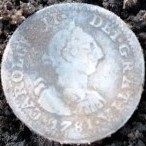
My Introduction To Detecting As A Child
JNimons posted a topic in Metal Detecting For Coins & Relics
**** WARNING****....This will probably be long and boring As a child, my family camped at Hammonassett State Park for 6 weeks every summer. There was a guy that camped near us that was always out MD'ing. I always tagged along and was hooked. This was probably 1977ish. That Christmas my parents bought me Sears-Whites hip mount detector. Straight TR. no discriminator, but I had a blast on the beach with it. Every evening my Dad and I would bicycle, or drive, to the beach, depending on where I was hunting. I found some stuff, but never the kind of things the guy that camped near us found. He was always showing me rings and such. I copied his techniques and talked to him all the time. One night I was scrubbing a portion of the beach, ( What the guy that camped near us called it. Dragging a foot to see where you've been , more or less gridding). A guy I had never seen before came up and started detecting over my scrubbed portion. At dark he walked up and showed me everything I missed, and thanked me for picking up all the junk for him! What a tool. My Dad was livid. Next morning....My Dad says come on...we're going for a ride...He wouldn't tell me where....Well...it was one of my first of many trips to Will & Jeans Metal Detectors in Killingworth, CT. I was in awe..It was just a room in their house, but they had all the Whites detectors I had been reading about in the magazines. I'm looking around, and my Dad is talking to Will, and I hear him say, I want the best machine you've got. Turned out to be the Whites 6000D. I was shocked at the price, and even more shocked when Dad bought it for me. I was 12 at the time. After a couple hours with Will learning how to use it, and playing in his test garden, We headed to the camp. Of course as soon as the car stopped I was swinging the machine. Within 10 minutes I had a good deep signal. Dad was digging for me. It seemed like it was 2 feet down, but I'm sure it wasn't more then 6 or 8 inches, and out popped a 1951 Franklin Half. I was out of my mind. That evening we headed to the beach and find my first gold. A mans wedding band with 5 or 6 diamonds in it. I was hooked for life at that point! These are finds I will never ever part with! The next week We went back to Will and Jeans and bought a second 6000D. Dad and I hunted together for many years. I hunted on and off into my early 20s, and then life got busy, and I went 25 years without detecting. Tho, I did think about it on and off, when I would see a place that looked promising. In 2015 My Mom passed away. Cleaning out her apartment, I found the 2 6000D's and a box with some of my old finds. I wish I knew what happened to the rest....There was so much more! A friend who detected stopped by my work, and handed me his Etrac. Big learning curve from that 6000D , but after aouple weeks learning the machine, I felt like a 12 year old again! Here are some pics of some of my finds from back in the day. If you got this far, thanks for reading this! -
It's been almost a year since I had a chance to get out and detect. Last year a forum member (incidentally one of the most gold getting-est people I've ever met and also a great detector operator) gave me a rare opportunity to check out some historically productive Arizona land. This trip I've been exploring more thoroughly and enjoying some quiet and solitude in a place that gets few visitors these days, and finding some gold while I'm at it. It's a bit of a trip in, a side by side is the only way I can get my dog there as it's too far for him to walk. This thing is a real steel pack mule, and I'm amazed at how smooth of a ride these Fox shocks give over rough terrain and rocks. Love this thing and it fits in the back of my truck like an ATV. I got the idea from reading one of Condor's posts about his RZR and thought - hmm that is the way to go for the desert. I'm not usually one for try to find patterns in rocks, old Spanish carvings, etc but this one caught my eye enough to make me think.."ehhhhh, maybe?". Sometimes you just really gotta write "4" in stone I guess. Or maybe it's natural, who knows. Speaking of patterns, sometimes when you set out with an idea to start looking for ancient exhumed paleo river channels on mountain tops, you start seeing them everywhere. And like Spanish carvings, sometimes you gotta wonder it's really what you are seeing or not. In this case, I think it is though and this is a water worn remnant boulder from an old stream or river channel. Testing soils and gravels with my XRF shows a number of potential "fingerprint" elements in common, and I believe that among a few other elements, the original source rock of the gravels was anomalous in cobalt. I've also noted anomalous cobalt readings in many quartz veins in the area and as distant as 10 miles away, so I believe it may be likely the gravels (and probably gold) also came from ancestral mountains in the immediate area and of similar age to the existing rocks, and not distant or now eroded away sources of different composition than what still exists here currently. The nuggets also have all the hallmarks of once being in such a paleo channel in my opinion. Striations showing movement, well rounded surfaces. Whatever the mechanism, they have clearly moved a lot. This one was an inverted low-high signal on the 6000 and came in at 3.8 grams. This gold is quite dense and sluggy. My XRF shows almost all Au and Fe so significant Au enrichment at surface has occured and silver is entirely depleted, also common with nuggets which find their ways into watercourses and travel some distances. In this case I think that distance is probably less than 5 miles though. The ground here is what some people would consider hot for the US. Or at least "medium" on the Taco Bell sauce packet scale. It's definitely very impregnated with iron oxides. However, I seem to have no troubles keeping the 6000 running hot and in Normal here with the 11" mono. However, I've just been running in the auto settings and letting GeoSense do it's thing, so I need to try the manual modes a bit more. I am definitely noticing that either the hotter soil, or GeoSense, or both are causing a bit of a depth reduction for what I'd expect of targets of similar size in milder soil. I got another low-high here, this one ended up being 2.something grams. These two are the only ones I took pictures of, I hadn't planned on posting anything at first so I wasn't really concentrating on documentation, but instead paying attention to exploring and observing the area for patterns and oddities. This is - I think - a javelina lower jawbone. You can see the gnarly canines and whatever that tooth up front is called. They've always steered clear of me in the past, but I sometimes wonder if I might piss one off by accident and get a tooth to the calf. I don't think I've ever heard of it happening though. Anyways, 24 nuggets for the 7 days ranging from 0.046 grams to 3.8 grams. Another went missing when I pulled them out of the ultrasonic cleaner and it stuck to my finger via surface tension and fell who knows where, it was the smallest and I think it was almost sub 0.04 grams. Aside from the EMI issues, I'm loving the 6000. It's my go-to machine and the one I am going to take everywhere with me when I don't need outright depth. For depth, I still keep my 7000 with the larger X Coils and honestly nothing can compete with that setup still when looking for deep lunkers or working small areas/patches. But I love the 6000 so far, the weight and deployment speed, Geosense, the no-threshold mode built in, it's just close to the perfect exploration/prospecting machine in my eyes. When I'm exploring I don't want to think about maximizing this or that setting, I want to pay attention to environment and make enough finds to know where I need to bring the big gun (7000) in later. I hope Coiltek, NF, or X Coils makes a little shooter coil. Something like 6x9 sounds about right. Assuming that tiny coil wouldn't make the 6000 too overly hypersensitive to soils. Though I can work around it, the EMI thing really is a let down though. It's even worse here in Arizona then when I used it in Nevada last year. Great exploration machine! Just one glaring flaw though, kinda like getting a badass Vette brand new from the factory with a rod knock. It's like, yeah ok I guess I can kinda ignore it but it'd be so much better working properly. And, it really seems like something that the manufacturer should address.
-
Been in another skunk period of a week or two until today. Got this pretty little nugget in a wash I keep finding gold in. Same wash I found my first two in that got me on the board back in October. A buddy of mine went over it with his Gpx5000 and missed it. This nugget was found 6-8 inches to the side of where I found my third Nugget in this wash. It was in the bar in the middle of the wash and down in the bedrock. I had missed it several weeks ago and didn't hear it. There was a few inches of silt on top and I thought I heard a blip in the threshold so I slowed down to snail pace and then I heard it. Kicked a layer away and now it was unmistakable. Kept digging to bedrock and it was still there. I knew this was going to be gold so I got it on video. I knew because I have not dug any trash in this wash. Hal could hear the signal from 150-200 feet up the wash so he rushed down to see if I got gold. Hal has been here for 4 weeks and still has not found any gold. I am really loving the Gpx6000. This detector is like a gold nugget bloodhound with the scent sniffing capabilities of a Grizzly. Dug out all around the area and dug out the bush better. This was painful as the bush turned out to be cat's claw and I got hooked across the face and those thorns dug in as I moved back. It wouldn't let me go. Lmao. My shirt was stuck to the bush, my hands were stuck to the bush and now all across my face on the right side. I don't know what I hate more choiya or cat's claw. I think probably cat's claw as I get caught up in it more often than choiya. I try to avoid choiya like the plague. It is like getting caught up in a nest of fish hooks. The more you fight getting free, the more you get hooked. The nugget looks like an s. AZGoldman came up to hunt with me and my buddy Hal from Montana. I am surprised I don't have any broken bones in my hand from all the times I hit my hand with the rock hammer when chiseling out bedrock. I dug up all around where I found these nuggets. I have a couple hundred yards or more of bedrock left to work. I am sticking put in my honey hole wash and to hell with the rest of Gold Basin and the weeks of skunks.
-
I attempted to capitalize on my success from our New Years Day hunt where my first coin of 2022 was a beautiful 1825 reale ( https://youtu.be/EFZ5Wf3cy2I). On that trip I removed a large section of brush that low and behold gave up several good targets once cleared. This general area produced several Phoenix buttons, a reale, green copper, flat buttons, relics, etc. This trip I tried removing more brush right in what was previously a hot zone, but I was shocked after busting my hump that the thicket of bushes wasn't hiding a single target. Tom likewise cleared out a large swath of overgrowth and after he went through with his Deus and got nothing (camp lead and shotgun butts perhaps), I went though it with the EQX and I did get what sounded like a good chance to be a deep coin, but it ended up being a deep shotgun shell. I don't recall shotgun shell being punishing on previous hunts there, but they were on this one, and I see that Tom also got an equally larger number of them. Then I moved to the area that I had cleared out on the last trip and thought it made good sense to continue expanding my pocket and aside from a couple pieces of large iron, it was devoid of targets. While I was bushwhacking Tom decided to freestyle it on the deer trails. This would prove to be a good move, as he soon started having success. Finally after Tom had bagged TWO Phoenix buttons and a flat button, I started working my way to where I thought he was, but the bottom line is I spent the majority of the hunt either bushwhacking dud areas, or exploring an entirely different area from where Tom was that ended up being practically devoid of targets. Tom kept texting me, hey I got another flat button, hey another phoenix button, hey a small birdcage button. Geesh he was killing it. I ended up with a single flat button way out in the bush, and when I finally returned closer to the "zone", BAM I landed a neat button! How it got there is completely beyond me?? I researched it and it's what's commonly referred to as a War of 1812 Royal Navy Officer 15mm gilt brass flat button. This Royal Navy Officers one piece button was manufactured between 1798-1812. What's that doing in Alta California?? Anyone in California ever find one of these? I know when Spain wasn't looking the British were trading there, and when Alta California was under Mexican authority, the British could trade there. On our way out we wanted to check an area that I sampled last trip and it produced a flat button or two. We were more thorough this time and hit an interesting little patch. Tom pulled a flat button and some big bronze foot to a candlestick or chalice or? Not far from him I got these two little silver buckles. Funky signal, silver screamer with other signals mixed in, pulled several targets out of this little area mixed in with junk. Got the little silver D buckle first, then the larger silver buckle second. Then I waded through some (gasp) clad and got a screaming flutey silver tone, and saw a little silver disc fly out of the hole!! Ended up being a seated half dime, a nice early one too from 1838. To bad it wasn't an Orleans mint mark, it'd be a high dollar little coin then, but it's still a killer find from early Alta California. Nothing else too exciting to be honest, Tom was on fire! I believe he ended up with something like nine period flat buttons, and 2 Phoenix buttons, and a bunch of period green copper. Hopefully he'll post his finds here. This was the maiden voyage for my new Coiltek 10x5 on the EQX800. My overall impressions: I was concerned about depth, but now I think without an A/B stock 11" vs the 10x5, I think it would be hard to notice in the field. I don't think it was any easier maneuvering through the brush, maybe it was, but in reality it seemed like the coil was getting hung up just as much haha When I got the seated half dime, the area was junky and it did really well separating each target in the mix when going slow , the 11" coil probably would've smeared some of the targets together. I didn't find the balance to be any different, it didn't feel lighter, I guess I'm used to slogging the stock 11" around. Thanks for looking! GL&HH, Cal
-
It's become a tradition of mine to write up a year-end summary of my detecting experience, and since most of my detecting is for coins and relics I keep it in this subforum. My plan for this past year was to experience some new detecting types (via longish trips) and find some new local sites to coin hunt. Thanks to Monte and Oregon Gregg I was welcomed to their June Ghost Town hunt in NE Nevada where I met about 20 like-minded, ambitious, and friendly detectorists. Besides co-organizer Gregg (unfortunately Monte was unable to attend), Utah Rich and Tom Slick were among the attendees who are members and posters here. My 6 days produced minimal coin finds but some decent relics. Next to the camaraderie I most enjoyed learning about a new kind of detecting in a site, soil, and intended target combination I had never previously experienced. In addition to that part of the trip I also spent some time in the Denver area, getting to hunt with the local Eureka club and particularly valuable -- meeting Jeff McClendon and picking his brain on the operation of the QED. Also on this trip I spent a couple days on a National Forest GPAA claim 8-9000 ft. up in NW Colorado. Unfortunately I came up empty handed (as far as gold) but learned quite a bit about site reading *and* how to deal with remote, rugged mountain roads and terrain. In August I headed East to NW Massachusetts on a 'blind date' (not literally, but was generously well taken care of by the land owners who I had never met) detect of an 18th Century homestead. Even dealing with hurricane Henri I was still able to get in several hours of detecting, finding my first USA Large Cent -- oldest coin to date -- 1803. I'll be writing up more on that in a couple days. On the way home I accepted an invitation by member dogodog to detect one of his old coin sites. Even though the heat and humidity was up there we still got in four productive hours with silver finds (mine a Merc and he did even better -- two silvers and a gold ring) along with lots of converstation/discussion. Just another perk of belonging here with such friendly, generous, and accomodating members. The other 10 1/2 months of detecting were done locally. (No photos in this post as I've shown many of those finds previously.) I did accomplish one of my 2021 New Years Resolutions of finding new sites. Eight of the 16 local sites I detected this year were ones I had never hunted. Another writeup I'll be posting shortly focuses in on one of those (muni park) and why I think it might have been previously unsearched. Now for some what I consider *key* statistics of these local hunts: 266 hrs of swinging at local sites, 104 Wheat pennies -- new record for one calendar year, 36 'other old coins' (silver content coins, Buffalo and earlier nickels, Indian Head Pennies) -- second to last year's record of 43, One interesting contrast between last year (where most of my detecting was done in a single, large park) and this year in regards to specifically silver coin finds -- 22 in 2021 vs. 27 in 2022, and more disparate are silver dimes -- 11 vs. 20. Magnifying the silver dime arena, I found 11 Roosies this year compared to 3 last year and 4 in all previous years. (OK, for those of you who stuck around, here's your eye-candy fix -- my 27 silver finds of the year: ) My goals this year include another trip West (ghost-towning and gold prospecting), another trip to that Massachusetts Colonial site, and locally getting enough guts to ask for permissions to private properties. I know of one that (if undetected) is going to be a real 'silver mine' but I need to 'practice' my people skills first so that one may have to wait for 2023.
-
A few weeks back forum member and friend abenson posted the results of an amazing hunt he had in Virginia at the latest week long "Diggin' in Virginia" organized group relic hunt. DIV is the gold standard of group hunts, a well organized, well oiled machine that enables folks regardless of equipment, skill, or experience to have access to sites in and around Culpeper, Virginia known to have Civil War activity through battle or long-term winter encampment. The CW history around Culpeper is immense. Several major engagements were fought within a 50 mile radius of the town including the Battle of Fredericksburg, Chancellorsville, the Battle of the Wilderness, and the battles of Cedar Mountain and the Battle of Brandy Station (the largest Cavalry engagement of the Civil War), the latter two being fought on Culpeper County land, and many other major and minor skirmishes. In addition, Culpeper was a popular site for winter encampments for both Armies. The result is simply a high density of CW related relics remaining in the ground on the various, numerous private farm properties in the area. DIV contracts with landowners to give the DIV participants access to the land to search for these coveted relics. The main catch is that relic hunting has been going on for multiple decades and although advances in technology and technique have enabled relic hunters to get access to deeply buried relics, those relics are disappearing and not being replenished. Those "surface finds" are actually pretty deep on average and the to complicate matters further, the soil is extremely mineralized due to the local geology which also happens to be home to some fairly significant natural gold deposits. Finally, several organized hunts and individual relic detectorists have repeatedly pounded the major "hot spot" sites. That doesn't mean the sites are devoid of relics but it does mean a little bit of research, detective work, and luck go a long way to getting you into an area of high relic concentration. Anyway, this DIV was number "50". No, it hasn't been held for 50 years, there have been 50+ organized DIV events held since around 2004. This event featured 4 separate sites that participants could visit as they pleased over a period of 5 days. If you read Andy's post that I linked above, you can see that he had a pretty good hunt, he had a plan, stuck to it, focused on one specific area, and was rewarded, indeed, with the find of a lifetime, a CS tongue. Part of a two-piece Confederate buckle (see pic below). This is my DIV 50 story. We started at a "new site" that was not hunted by DIV previously. As you might imagine, it was highly popular on day 1. Me and my two buds hit the site for awhile came up with a few bullets and not much else and then decided to hit another site where we previously had some luck. There too, the finds were few and far between but we were not skunked. We decided to hit a different site on day 2 where we had also had some previous luck with very little success. Lead is great but we were really craving brass. We visited a fourth site on day 3. This site was a site we previously had sworn off based on previous poor luck and you can now see how desperate our crew was becoming. We found a couple more CW bullets there and then proceeded to go back to a different section of the site we visited on Day 2. On the way there we noticed that a field that had been previously occupied with a fresh crop of soybeans had just been harvested that day. As far as that DIV is concerned, that would be considered virgin hunting ground and we were going to be one of the first crews exploiting it. We hit the field spread out and started surveying it for possible hot spots. I found a couple of tiny brass percussion caps and some non-descript brass, but it was starting to look like another wild goose chase. I hit another strong signal, that sounded good in the GPX headphones, nice high tone that did not break and started digging. As I remove more and more dirt and rechecked the hole the signal remained loud and clear and unbreaking (I was using a moderate iron reject setting). Finally, I located the target but to my dismay it was in the side wall of the hole. Not a good sign. That typically happens with ferrous targets because they tend to pinpoint off-center. I pursued it anyway and a beautiful green, brass something fell out of the sidewall and into the bottom of the hole. It was a heavy brass object that resembled a section of wreath. I knew what I just dug and I was simultaneously filled with feelings of joy and disappointment. I too had recovered part of a two piece tongue and wreath Confederate Army buckle. Andy had recovered his "find of a lifetime" CS tongue. I recovered part of the wreath that encircles the tongue when the two-piece buckle is fastened together. But unfortunately, under circumstances unknown (perhaps under the plow, perhaps in battle) it was only a broken off partial section of the Wreath and not fully intact. Hey a partial wreath is better than no wreath, and believe me I opened up that hole and also super searched the entire vicinity for an intact tongue or any other matching fragments to the partial wreath, but was unsuccessful. Similar feelings occur when you recover military two-piece button backs with the faces missing. On one hand you know what you got and you are happy to have recovered some brass, but he feeling is bittersweet knowing what might have been if the button (buckle) was recovered intact. That day and the next day I recovered five button backs. Ha. But the good news is that I also recovered 5 intact Eagle buttons including an Eagle "I" coat button that still had some gilt. A pretty good DIV haul for me and the rest of the crew as that field contained a number of brass button, minie ball, and brass relic hot spots. We also dodged the tractor a few times and it even forced me to abandon a sweet signal as it "ran over" my target. I let the tractor pass, reacquired the target and pulled a nice Eagle button. Anyway enjoy the pics of my finds from DIV 50. I managed to recover a relic from each site, just missed a spectacular find, and kidded Andy by saying that I found the part of the wreath for his CS Tongue that he was unable to recover....
-
It's been a while since I posted some finds. It has been a productive fall relic season for me, so that isn't the reason. Perhaps too much focus on the new machines that are about to make a splash in the detecting community and other distractions big and small. Anyway - on Friday Bob (F350Platinum) again graciously let me invite myself down his way again for some last minute 2021 detecting at a new permission he has been surveying. He wrote about it here. I got a late start so Bob had already had a chance to snag some finds in another part of the farm. After Bob kept me from driving my SUV into the local pond and then a short chat with the landowner, we were off swinging. We moved into the direction of the farmhouse, reckoning that the Colonial finds would concentrate towards the house. We crossed a couple of promising spots that were giving up telltale older relics (buttons, brass buckles) but they dried up as we crossed into a greener, muddier portion of the field. So we circled back the the "hot" spots and focused in those areas. Was swinging the Nox with the 11" coil, which was a change up from my recent hunts sticking with the Nox 5x10 that I have really bonded with. Anyway, was looking for a little more coverage and depth and with the targets few and far between. After recovering a few buttons and a nice D Buckle and a some modern trash (shotgun shells, can slaw), I got a nice solid, borderline 20/21 hit. Thinking IHP or some heavy brass, I flipped the plug, and the pinpointer zeroed in on a non-descript small, dark, flat, oval-shaped target. Perhaps a medal or pendant of some sort. Definitely, not a coin, so I thought. As I cleaned it off, it started to look like silver. Ok, cool a silver pendant/medal. I flipped it over, saw the off-center Jerusalem Cross, and immediately realized I had just dug my first Spanish Cob. 1/2 Reale weight. Bob and I researched and it appears to be a Mexico City Cob minted during the reign of King Charles II 1663-1699. My first Cob about 30 miles south of where Bob fount his first Cob when we last hunted together. Some nice colonial buttons and other odds and ends (including 2 unidentifiable copper or brass disks that are not old coppers or tokens) from the 12/31 hunt and our previous get together a few weeks ago. Thanks for letting me enjoy a little of your detecting paradise, Bob. See you again in 2022. I think more great finds in store as you've just scratched the surface on your new sites. Happy New Year Everyone!
-
First off, I have been off the forums for a while. It's not that I have not been out prospecting, but to be honest, things have just been a little down the last couple years... and well, maybe I got a little in the habit of not talking to people. I'm sure everyone knows the feeling. Anyways, I did a trip with a couple buddies to an area we have been expanding upon for years. (in the desert of Arizona) We do ok here and there. Usually, I have quite the luck, but this time my buddy was rocking it. He managed to stumble upon a patch and true to his word, after he collected a few, he called out to me so that I could come home with a little gold as well. It sounds weird, but when we travel off to a place, we try to make sure everyone goes home with gold. This usually means, get 2 or 3 pcs, you call your buddies over. So I got there and went to work. After a couple hidden cans, I found my first square specimen (sort of strange piece) and then we took turns until I had found my second piece. Well at this point, we were content. My buddy that found the patch kept looking and so I moved on, thankful that I would not go home with the skunk. At this point it was time to get away from the patch and find new areas. I tried washes nearby and then ended up circling to the other side of the hill with the patch. I see a little flat area and head right up to it. It only seemed like seconds when I got a booming signal. Once in the scoop, it wasn't long before I felt the weight fall into my hand. It ended up being a nice chunky 11 grammer. This day just got better. Another smaller patch. Of course my buddies always rag on me for finding the chunkers and skipping over the smaller nuggets. I guess I can live with that. Honestly, it was just a good time hanging out. Some before and after pics are shown below. Best of luck to everyone in the New Year!!
-
I went on a little day trip to the Mojave Desert, California. It is within a day’s round trip from where I live but I had to get up at 3 am to get there on time and to have enough time available for prospecting. I decided to just have a little exploration trip and to check out this new area that I had in mind. The general area that I wanted to explore has a long history of lode and placer mining, mostly in the late 19th century, but mining was not been done on grand scale due to the extreme harsh weather conditions and lack of water. It is not too far away from Death Valley with temperatures easily reaching 115 deg F and above in summer (43 deg C) and way below freezing at night time in winter. I happen to like this harsh and unforgiving environment and spending time there is like being in a meditative state thinking to be in a foreign world, or like being on another planet. I selected a canyon area that I spotted on google earth that had a couple of old placer mines nearby. The geology is in this general region is characterized by tertiary sandstone, shale, conglomerate, breccia, and ancient lake deposits. However, there are also significant lava rock occurrences in form of highly mineralized volcanic tuff which makes detecting extremely challenging. This is a little depiction of the rocks you find there. Many of these rocks are screamers that neither the 6000 nor the 7000 were able to handle. What made the situation even more complicated is that these “hot rocks” were not just on the surface but also buried all the way deep. So, identifying targets of interest that were worth-wile digging was nearly impossible and many times I found hot rocks 1-2 feet deep that the detector picked up. I started with the 6000 and found my first little nugget very close to the surface, around 2 inch deep. What made this one interesting was that it was stuck on a volcanic tuff rock. This is another example of how gold flakes can be stuck to these rocks and wiping the dirt off of them before throwing them away can pay off. I run the 6000 on Auto/Normal/threshold on with the detector volume set all the way down to 1 but with the headset volume set to about 6 clicks. This actually worked remarkably well and made detecting a lot easier without losing sensitivity. I can highly recommend these settings and I believe Steve and JP have commented on this before. I also picked up a lot of tiny bird shots, another example of how sensitive the 6000 is. I then switched to the 7000/NF-Zsearch which I run in HY/Normal/Sens 15/semi-auto GB/smoothing off/volume 6/threshold 27. To my surprise, the detector was fairly stable under these conditions but the hot rocks still remained a major issue (no surprise). However, even when using these fairly hot settings I picked up way less bird shots than with the 6000. This was a striking example of how much more sensitive the 6000 is on tiny shallow surface targets. I managed to pick up 3 more flakes, all of which were extremely thin and flat. The nature of these flakes is suggestive of water wearing and major pounding force as part of the volcanic activity and alluvial mass flows. The only way to pick these up was by extremely slow swing speed and strict coil control which paid off in this difficult to detect area. Had I moved faster as part of ground scanning I would have missed them for sure. Overall, I was happy with my finds (albeit very modest) as I think this area has potential despite the challenging detecting conditions. I will definitely go back there for a more thorough and longer exploration. The landscape and general area are absolutely breathtaking! Many bad things can be said about California, but the nature is amazing and extremely divers, with the gold rich Sierra Nevada to the North and the vast gold bearing Mojave and Colorado deserts to the South, all of which are just within a 3-6 hour drive, depending on where you live. Here is the trash/gold ratio for the day Well, it doesn’t look too good for the “gold team”. But when does it ever? 😛 Wishing you all a Merry Christmas and a safe, healthy, happy and prosperous new year! GC
-
Part 1 Spoiler Alert: Not my personal misadventure this time. The Covid kept us out of prospecting spots in Baja for over a year now, but we were finally able to give it a go this past week. Drove down on Monday, smooth sailing through the port at Algodones, although we did have to buy a $35.00 tourist visa. They stamped our passports and everything, so it's probably legit. Baja 5 highway is in great shape especially down past San Felipe where is was always under construction from washouts. We made it to Miramar and 4 wheeled it down the main wash out of sight from prying eyes. This year we took my Polaris RZR for its maiden trip in rough Baja terrain. All our trail building in the past was designed for 2 wheeled motor bikes, so we had to make some improvements for the RZR 60" width to get up the wash to the placer zone. We toted rocks and built ramps to get up on some of the steeper sections and tested our improvements. Scary, but passable. In one section I had Dennis hanging off the passenger door frame to counter-balance the rig from sliding off into a deep hole. Pictures will follow. We got back to our camp and settled down for some cold ones when we noticed a hiker coming down the wash we had just driven. A fellow prospector with true pioneer blood. He had hiked a roundtrip of no less than 15 miles over a span of 4 days with only 2 gallons of water. He carried an SDC 2300 and a Equinox 800 in a pack that weighed at least 65 lbs. In desperation he had tried to filter water from a spring far up the canyon, but found it full of alkaline. He pulled up a chair and downed his fill of fresh water and started in on a couple cold beers with us. As we talked about his experience he asked "hey, is one of you the Condor", I read your posts, especially the ones about Baja. We swapped prospector stories till after 8pm when he said he needed to get going. His vehicle was parked another couple miles downstream in a hidden gulch. I convinced him to let me drive him down in the RZR and got a chance to use the myriad LED light bars on my rig to light the way. We found the road he had driven even though he had broomed off his tire tracks. Well, we got to his parking spot to find nothing but emptiness. We knew it was the right place because the thief had thrown out the hiker's trash and a gallon of water. That made for a long night back at our camp, where we drank and cursed the dirty dogs until after midnight. The next morning we drove back down for a view in the daylight. The only track was a motorbike track, with one knobby front tire and a nearly slick rear tire. No tracks or footwear impressions to speak of. I think the sly dogs had used the hiker's own broom to brush out their own tracks where they would have broken into the car, reconnected the battery cables and hotwired the ignition. We did a full circle around the area, there are no inhabitants for over 10 rough miles. The road itself is not suitable for travel for anything but offroad capable vehicles and its just not a stretch of any interest expect for prospectors who know the placer history. An unlucky day for sure. Anyway, the hiker did have a satellite phone and was able to call for a ride. We futzed around with him most of the day till his ride could get there, so no detecting to speak of that day. Part II to follow with 2 full days of detecting.
-
My 2021 New Years Resolution (and I think my 2020 one, too) was to find sites I hadn't previously searched rather than to put all my eggs on cleaning up what's left of familiar sites. (I still do some of that, too, though). This year I've already reported on four previously unsearched (by me, that is) sites, all which have produced. More on those in my year end summary in a month. Early in November I decided to make one more try for 2021 at finding some new ground and with the help of HistoricAerials.com, I found four promising locations. I'm going to simply refer to them as sites 0, 1, 2, and 3. Site 0 is the easiest to report on. From early 20th Century USGS topos it was a small (one room?) school that disappeared around 1950. A drive by showed that not only is it now a private home, but that the intersection where it was located has been seriously reworked, i.e. enlargened. At best it falls into the 'private permission' category and I'm not at all good at those. Site 1, with added help from Google searching, was an elementary school and high school back at least to the eary 30's. The HS closed in the mid 60's and the elementary school a few years later. The building is still there but there are mixed signals as to whether it's public or private. Some threatening signs indicated at least part of it is currently privately leased, but the a__holes are very vague about what is and isn't theirs. I spent 1 1/2 hours in a couple spots with promising results (see photo of good finds below) but I just didn't feel comfortable. There was a lot of coming and going by various groups (sports participants, church goers, etc.) and although no one bothered me I just didn't feel welcome. Site 2 was another small elementary school. I don't know when it was formed but it appears to also go back to early in the 20th Century. I think it closed around 1960. It's now a small public park and community center. Unfortunately both my visual (internet) research as well as detecting and viewing the site in person makes me think it's been heavily reworked since the school was torn down. First hunt there, 3 1/2 hours, produced 2 Wheaties and a sterling ring, plus a fair amount of modern coins and trash. That was my survey hunt. My second trip there was intended to focus in on a trashy but potentially less overfilled part with the ML Equinox and 6" coil, but that wasn't very fruitful. About 2 hours in I was approached by an elderly (81 year old) friendly neighbor who filled me in on some history. He said he had attended that school as a youngster (presumably around 1950) and told me that although several detectorists had been there before me, as far as he knew they had never searched a slope near one edge of the property where he said he used to play and that bulldozers hadn't bothered. Now that's the kind of info I like to hear! I thanked him and headed over there. For now I'll leave it at that and tell more in the show-and-tell portion of this post. He twice more returned and told me of some other nearby sites I should search but they all sounded like private properties. Site 3 is an active, modern elementary school which replaced an early one built around 1955. I was able to go there during their Thanksgiving recess. Unfortunately this site has been heavily reworked since the original school was razed and it also feels like it's been rather thoroughly searched. In 7 1/2 hours (two days) of hunting I only found 2 Wheats plus one other oldie (more on that shortly). OK, here is the eye candy you've been waiting for: Top two items are from Site 1 -- 1983-D nickel-clad half dollar (only my second ever) and a necklace chain and pendant which was clean but unfortunately apparently (magnetic) nickel plated copper. Both were reasonably shallow but not on the surface. Based upon these finds I don't think this part of this site has seen detectors in 2 or 3 decades. Now the finds are in pairs from lower left. Site 2 produced this sterling ring with stones (don't know if real, but they look nice to my eye, and especially to my wife who has already claimed it!). Thanks to that 81 year old former student I found the 1899 Indian Head Penny on the virgin slope where he used to play. Turns out the EMI was so bad I had to use 4 kHz on the ML Equinox and its dTID rang up in the high 20's (silver coin zone), not 20-ish where they show up in MultiFrequency. It was only about 4 inches deep. Next two (silver alloy 'Warnick' and broken piece of jewelry) were found at Site 3, showing that there are a few spots which haven't been backfilled. The broken piece showed up in the USA nickel zone (dTID 12-13 on the Equinox) and given its size I think this is high conductive composition. Both ends show that they were broken off something larger (bracelet?) and the fact there is zero copper coloring there makes me think this could be a silver alloy. Finally, the last two items on the right were found this past week in my bread-and-butter 2021 site, the 'Wheatfield', not one of these four recently reserached sites. The ring has a men's wedding band shape but is marked '925' so sterling. (My wife has claimed it, too.) The IHP is a 1901. In my two times searching there last week I found 5 Wheat pennies each day (3 hour hunts per day). I expect to spend my last few hunts this year at that site. I'm sure there are more oldies and I'm shooting for a record year (quantity) of Wheat penny finds. I only need 5 more to tie last year's 103. The above picture is the 'good'. Here are the 'bad' -- interesting (?) non-coin finds from these four sites: And if you want to see 'ugly', you'll have to await a future post.
- 10 replies
-
- stories trips adventures
- coin detecting
-
(and 1 more)
Tagged with:
-
Tom_in_CA and I have been itching to get out detecting! We decided to hit some of our old "back pocket" sites and check out a couple of new sites as well. Reales, several Phoenix Buttons, flat buttons, some nice pre Civil War eagle buttons, seateds, relics, and the usual suspects were found this trip! https://youtu.be/pHhVseSHWac

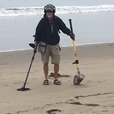
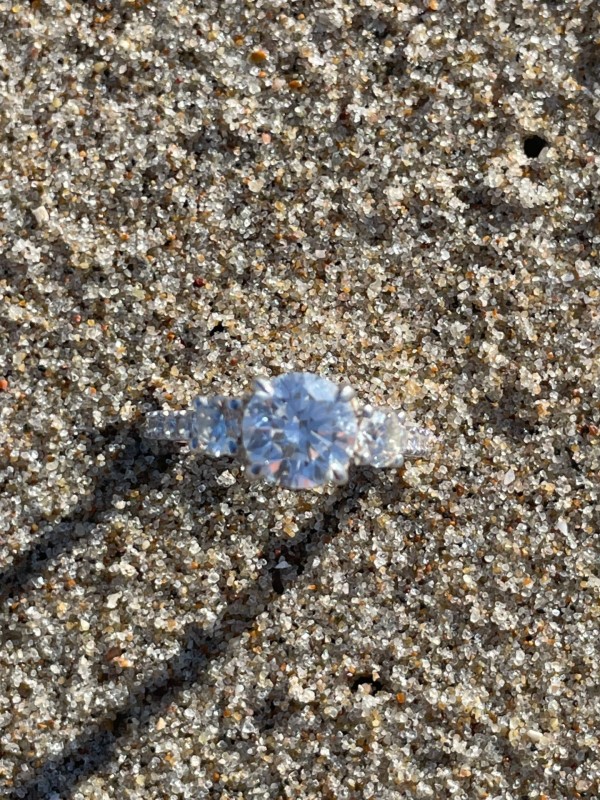
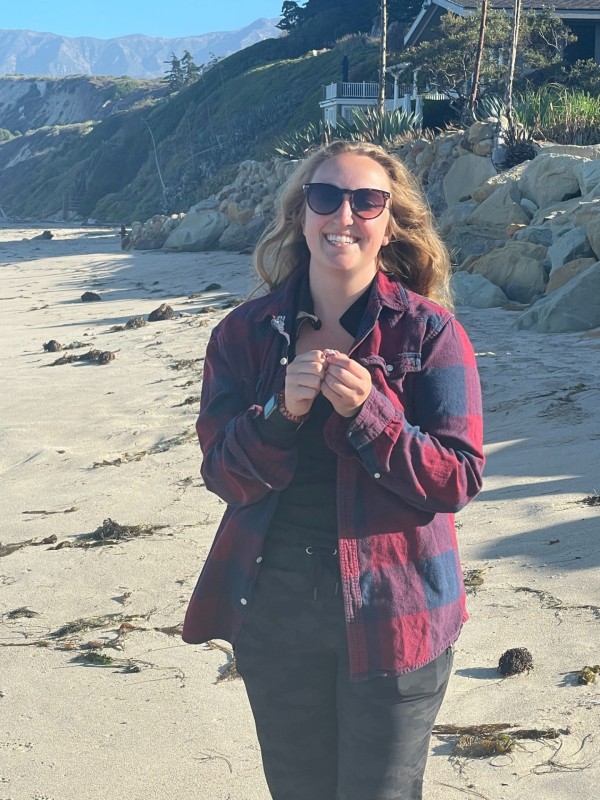
.thumb.jpg.8761b3d9b3da119b9e6d1912f67275ad.jpg)
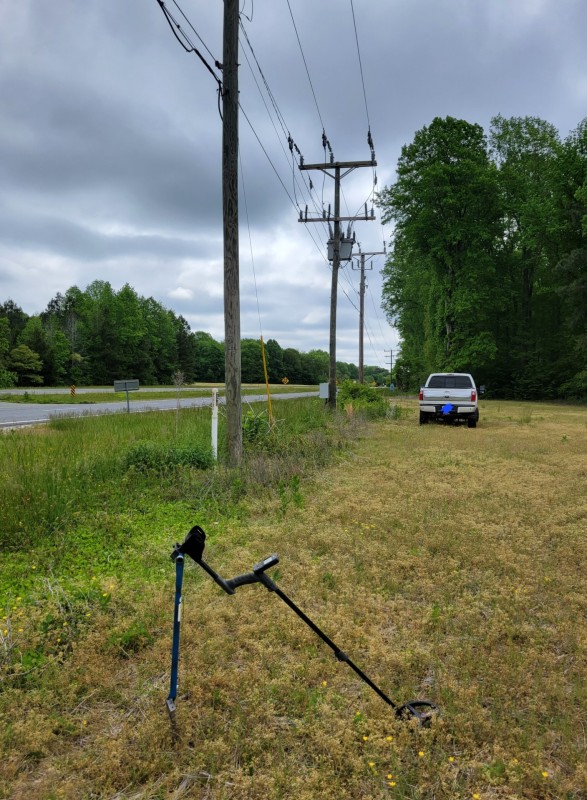
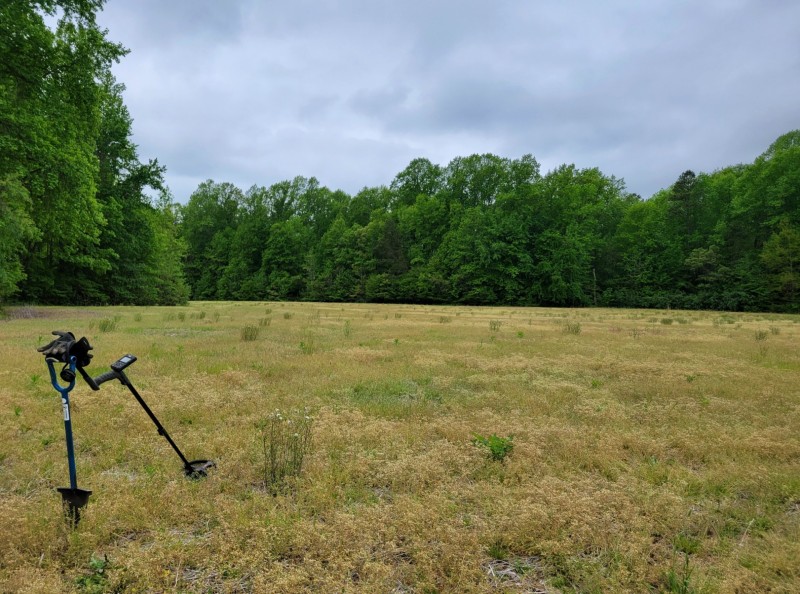
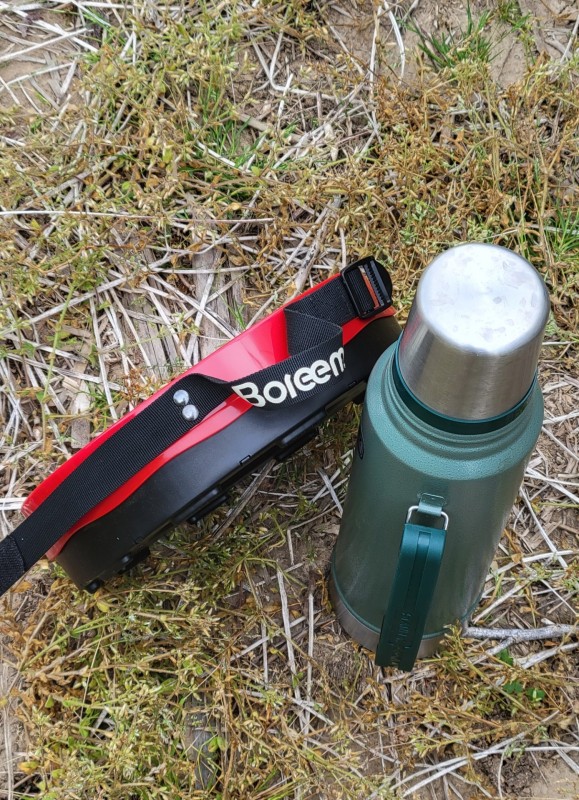
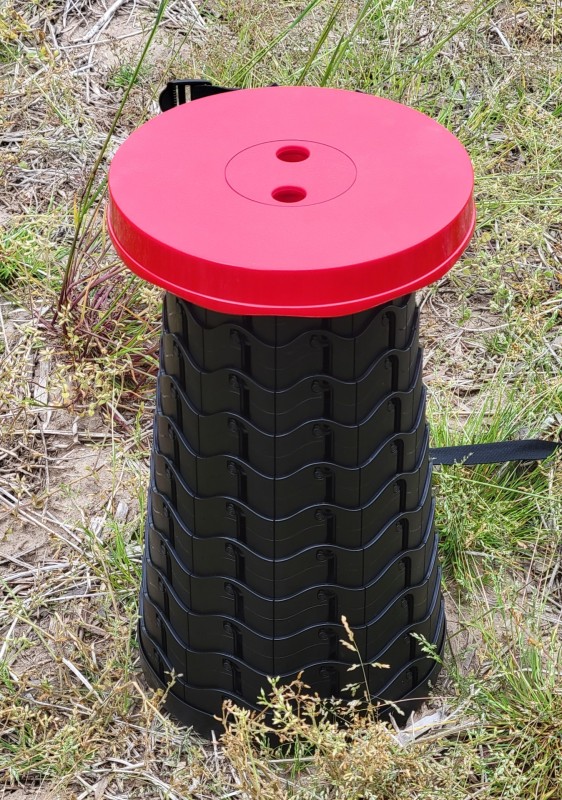
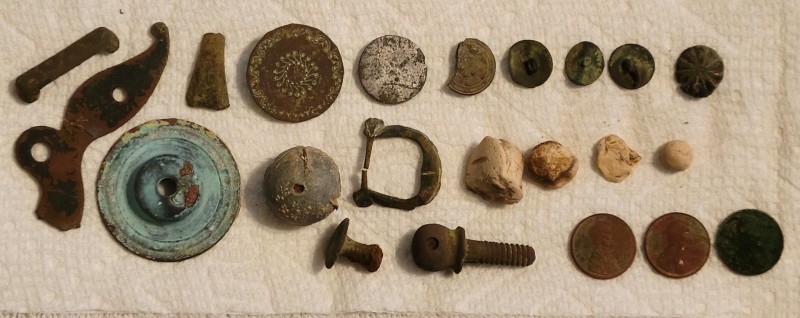
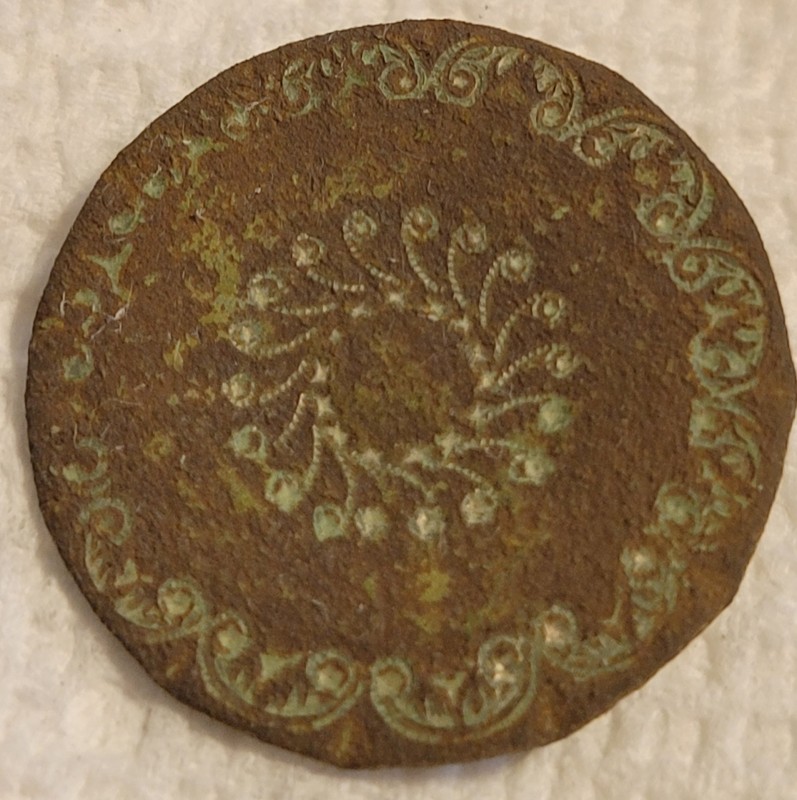
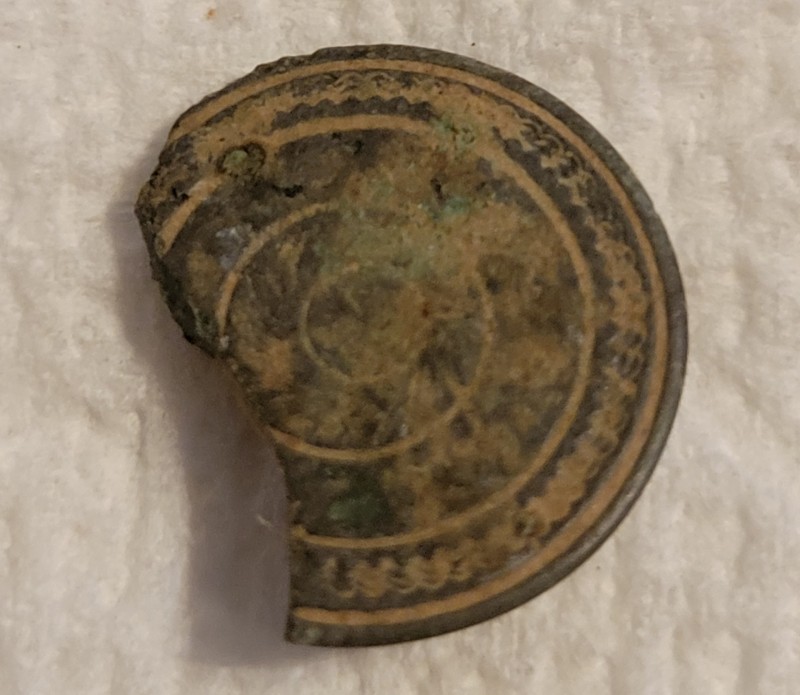
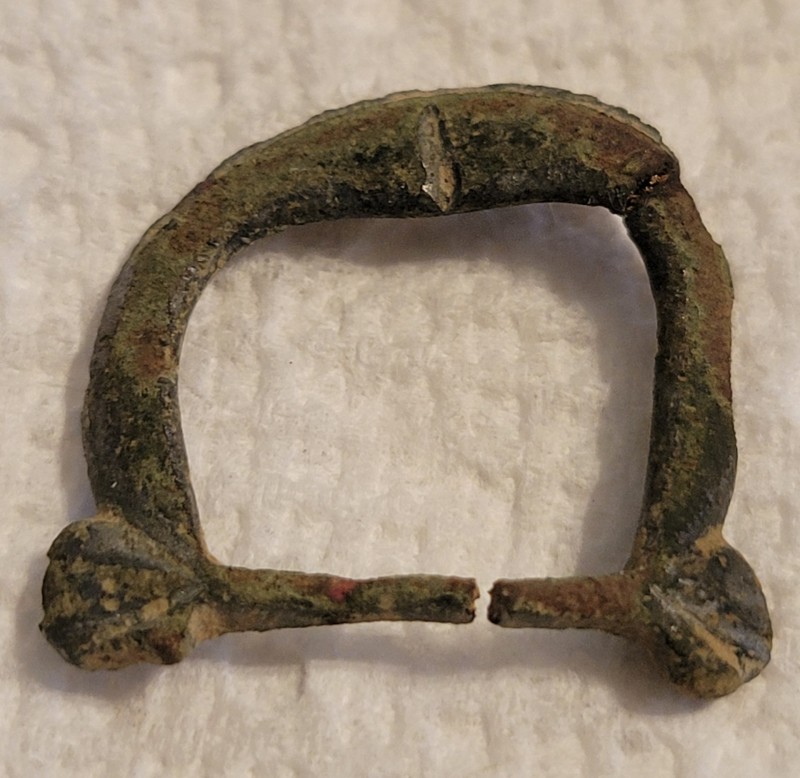
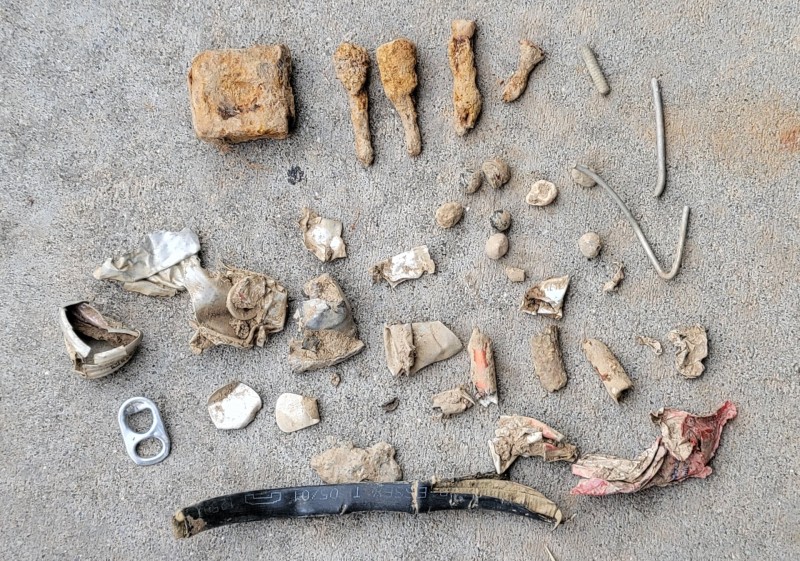


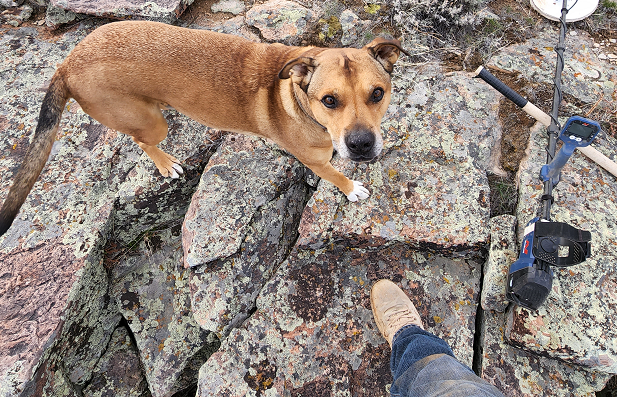
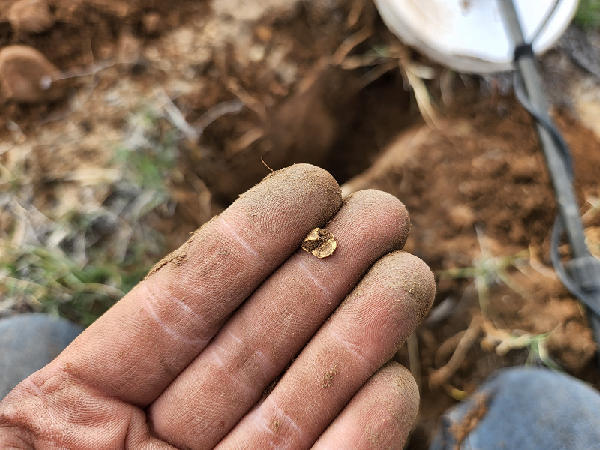
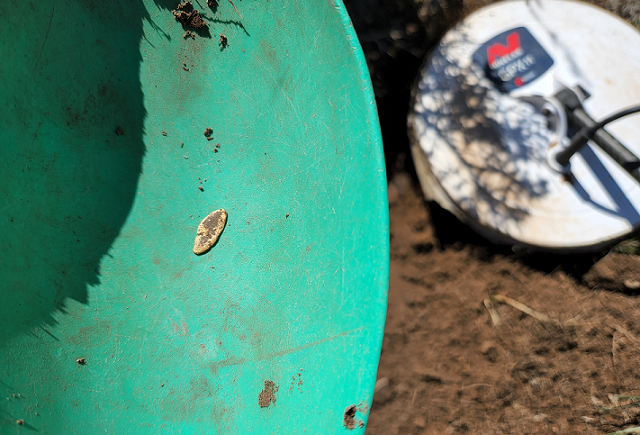
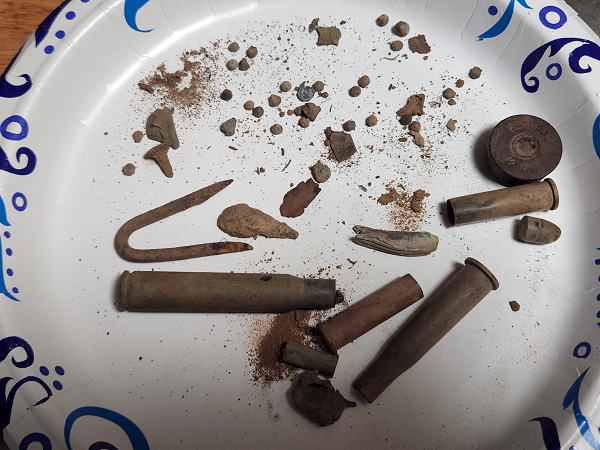
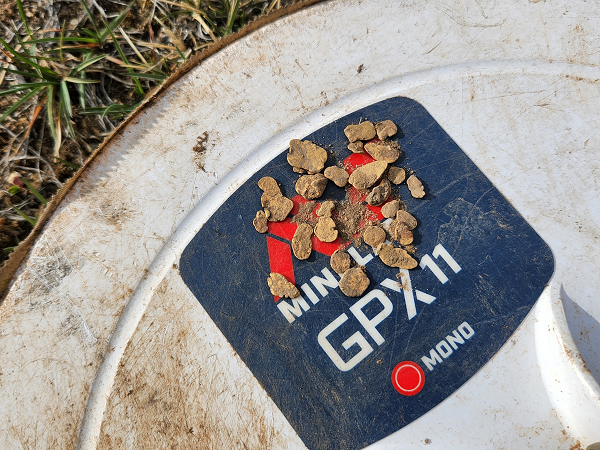


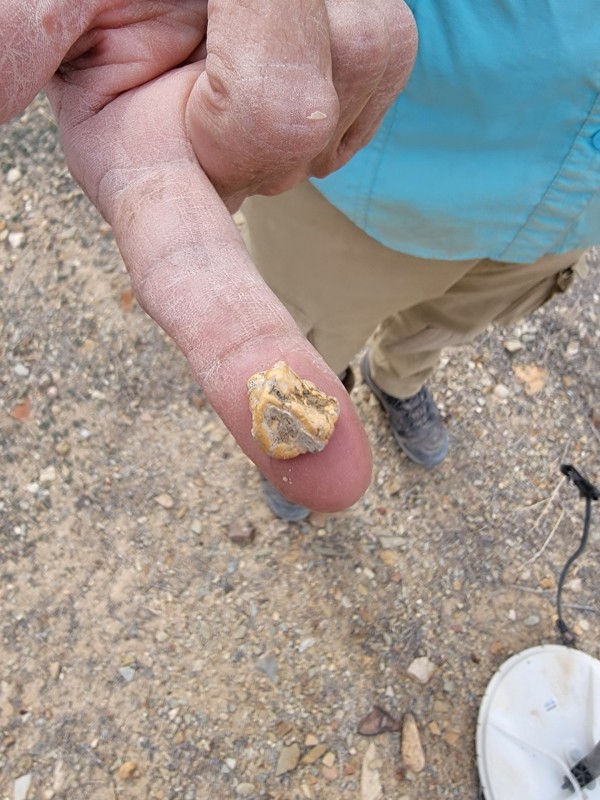
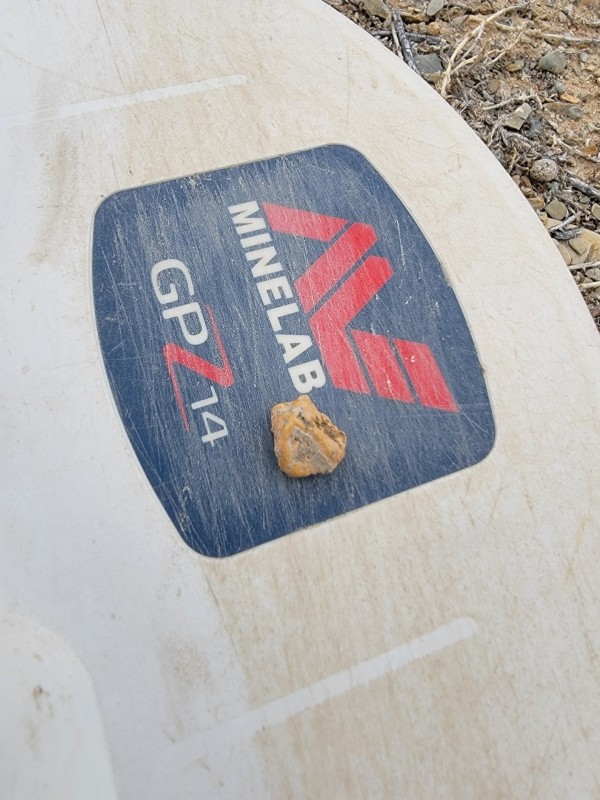
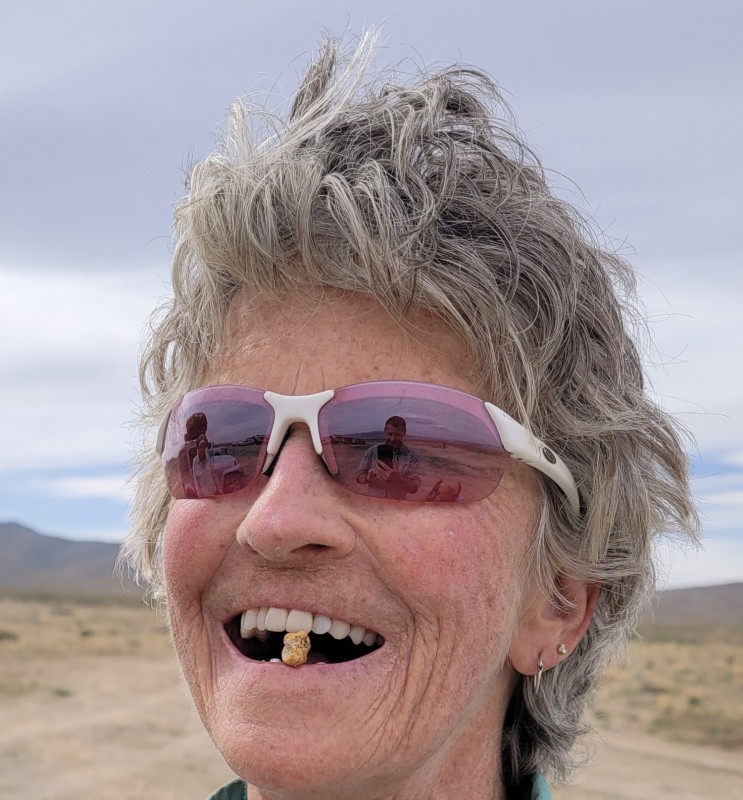
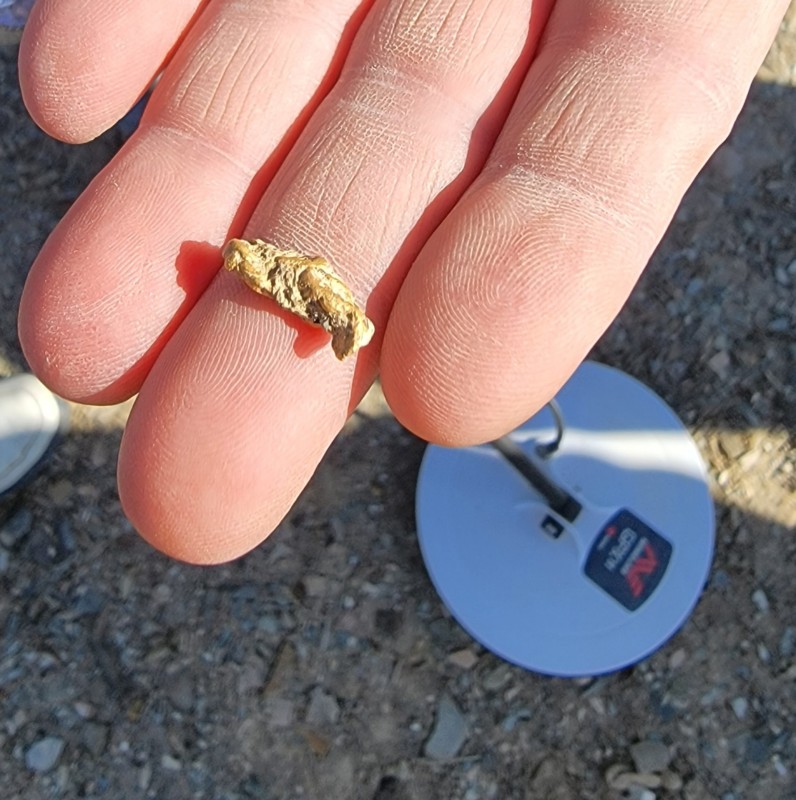
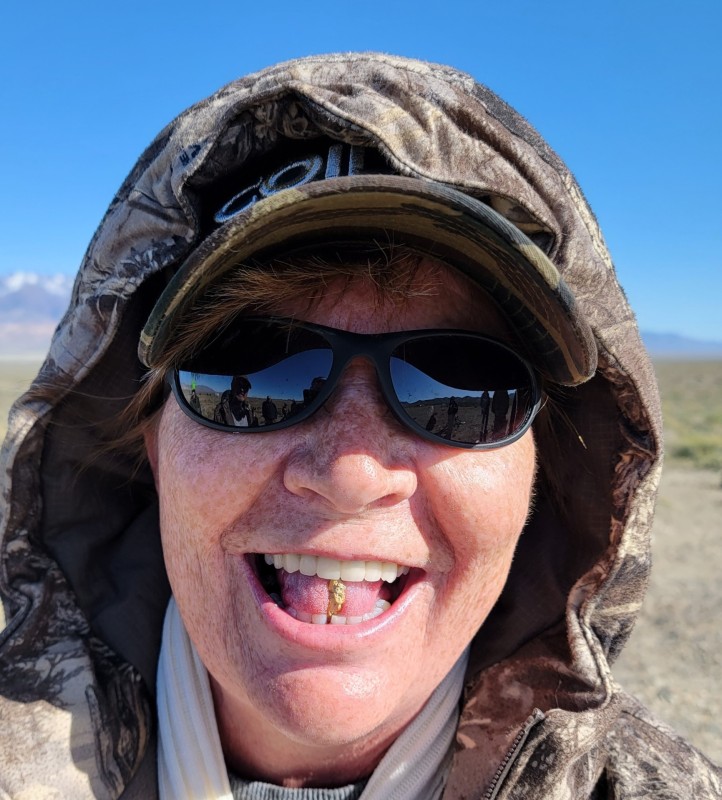
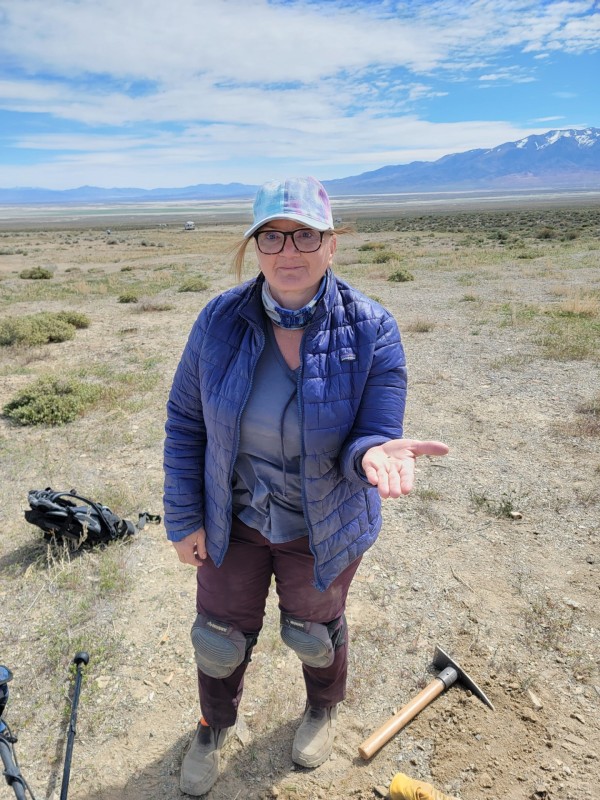
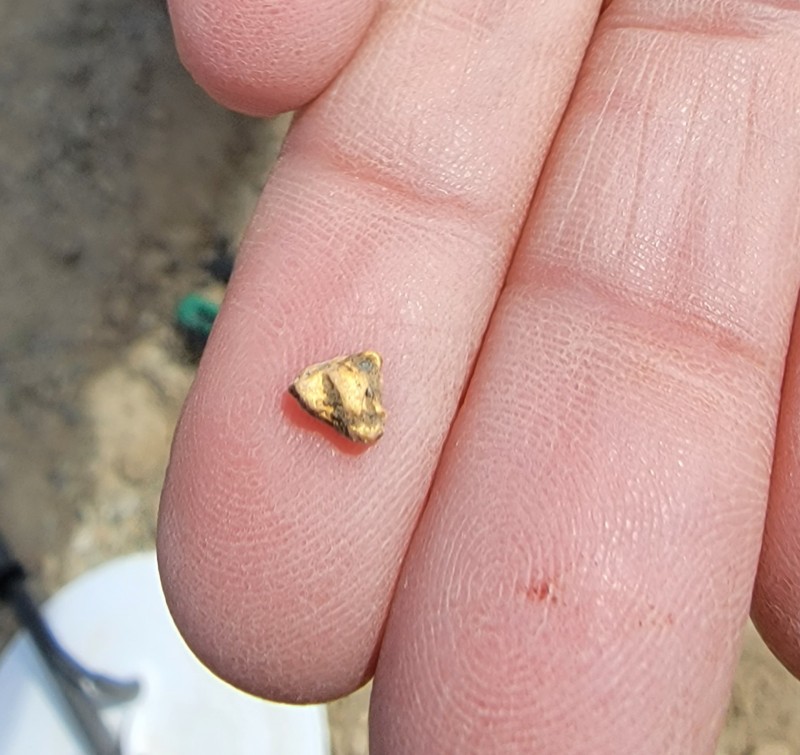
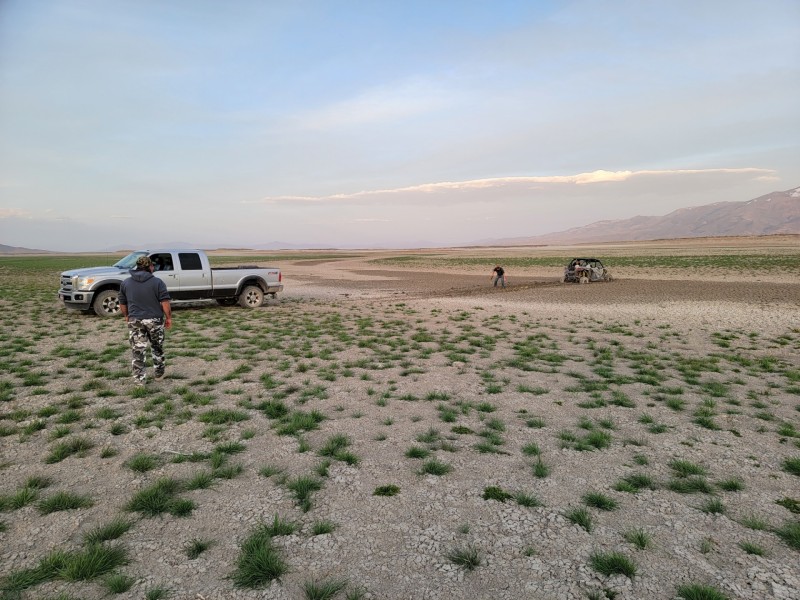
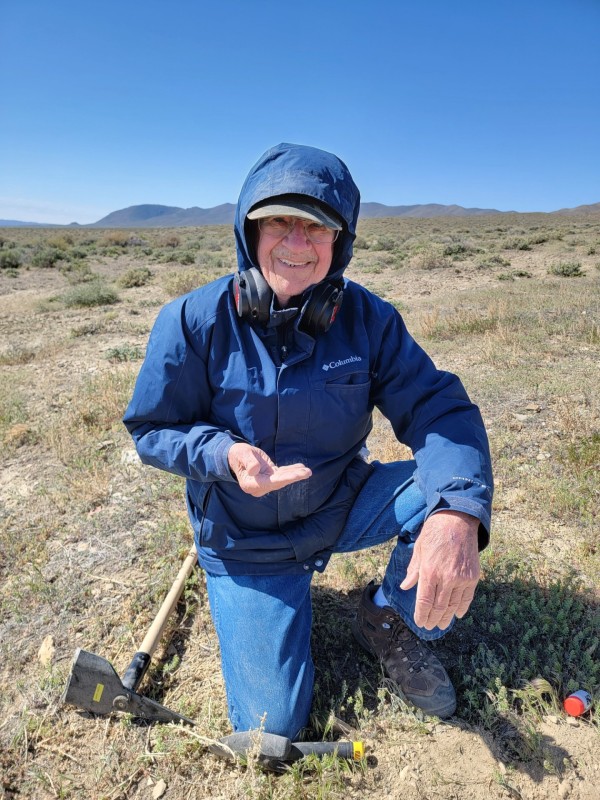
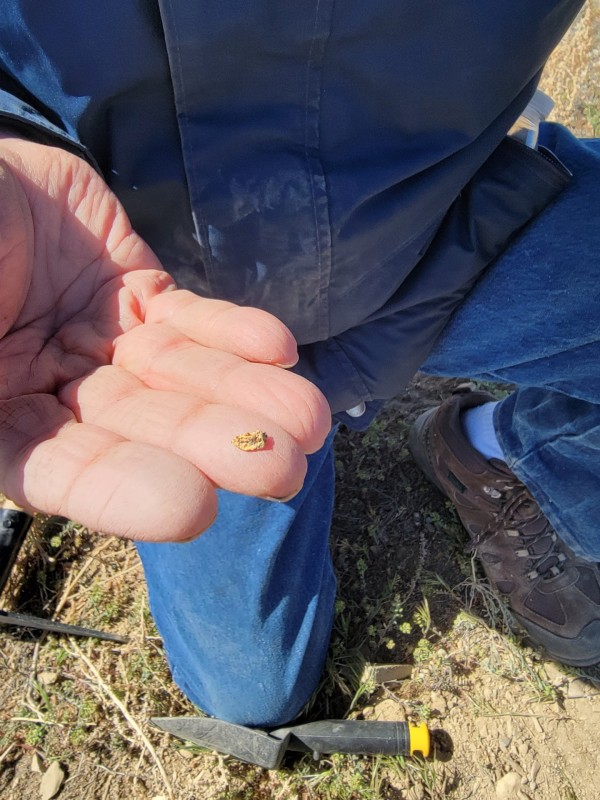
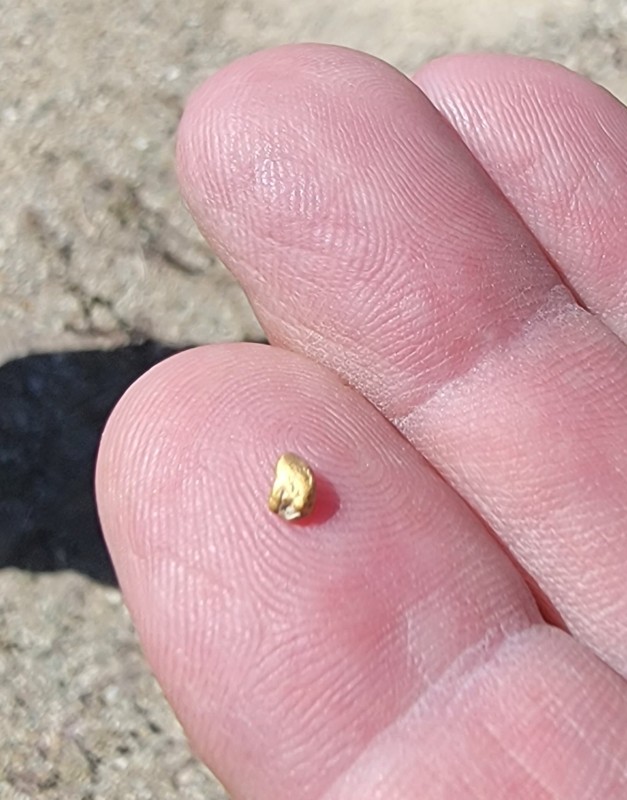
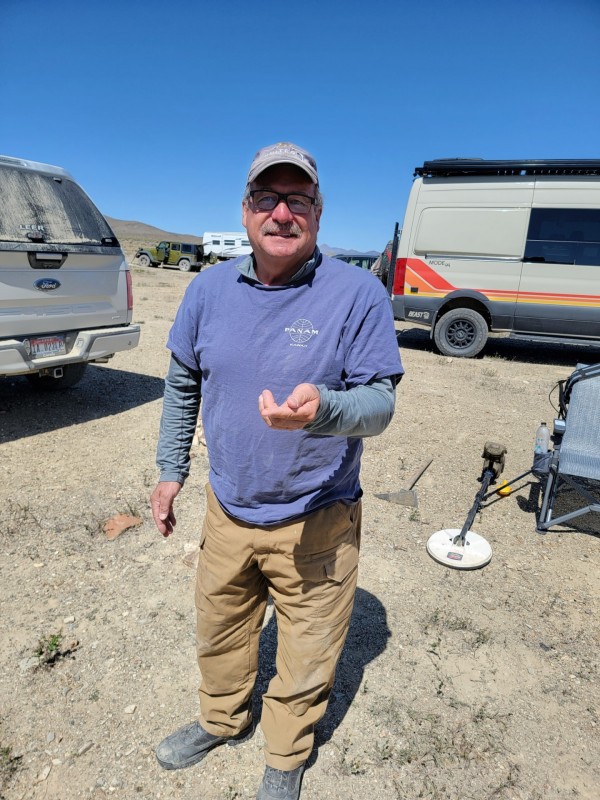
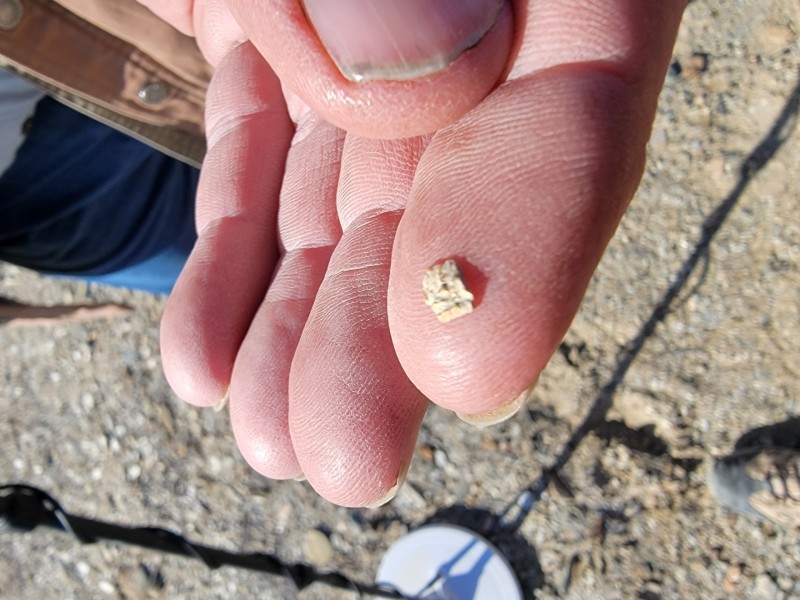
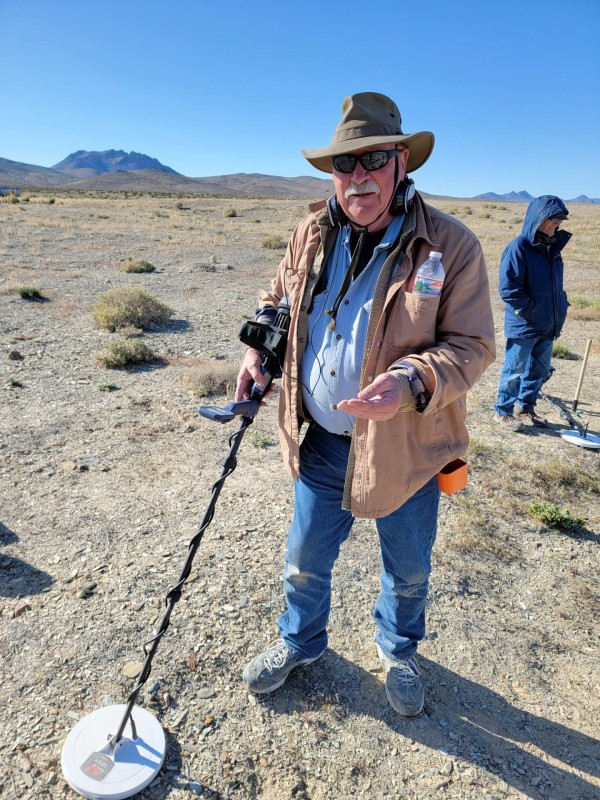
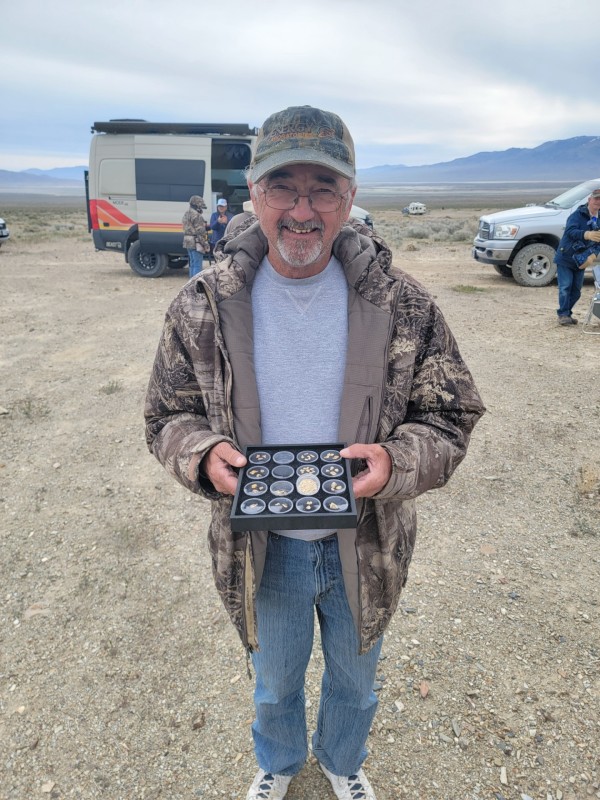
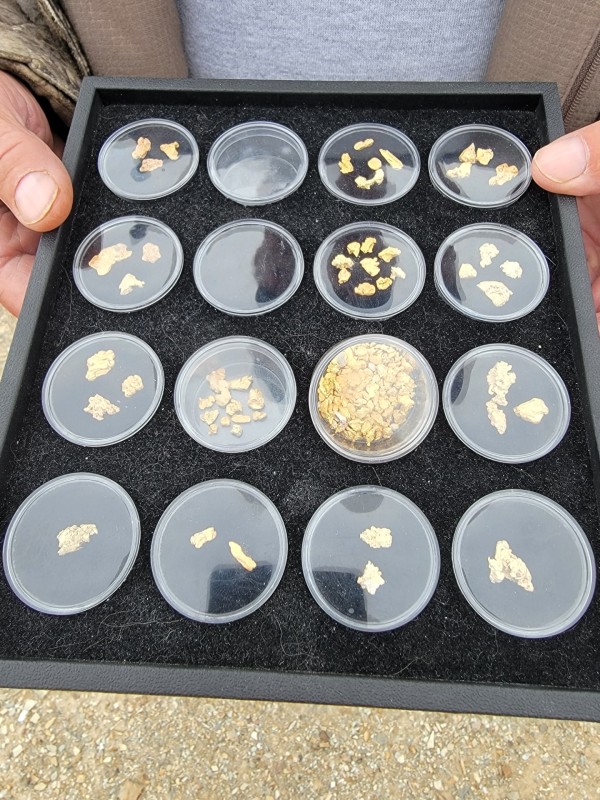
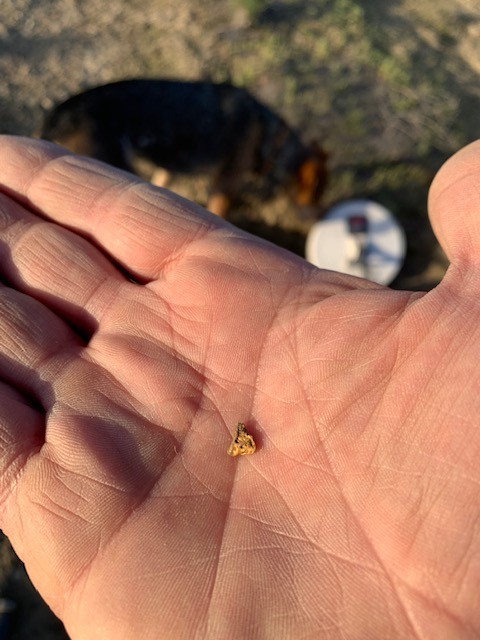
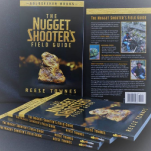
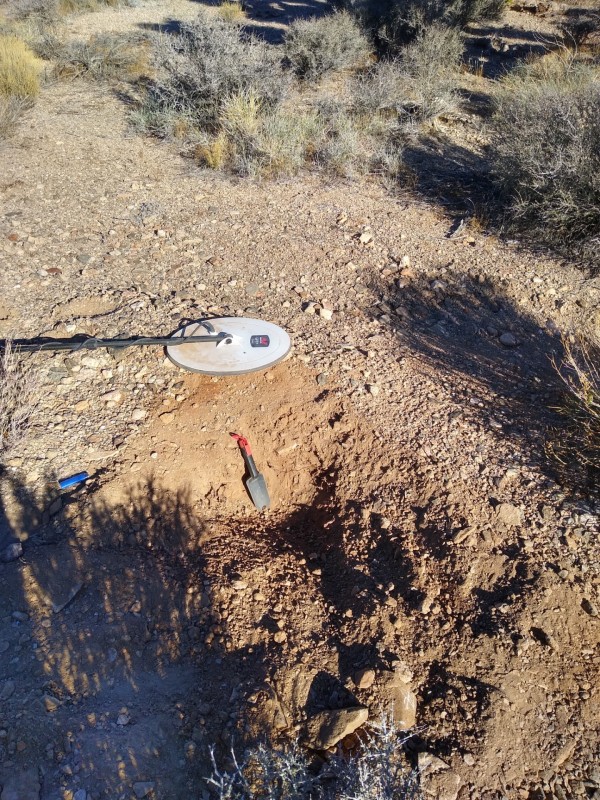
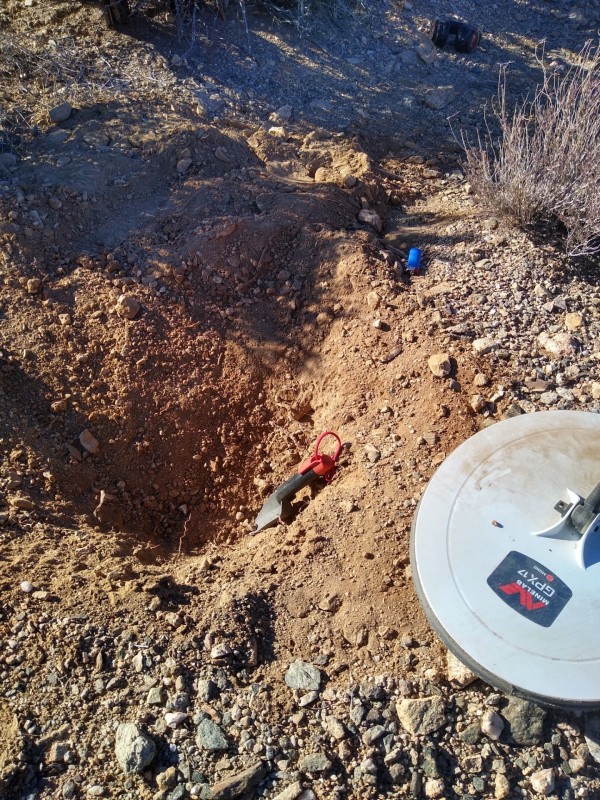
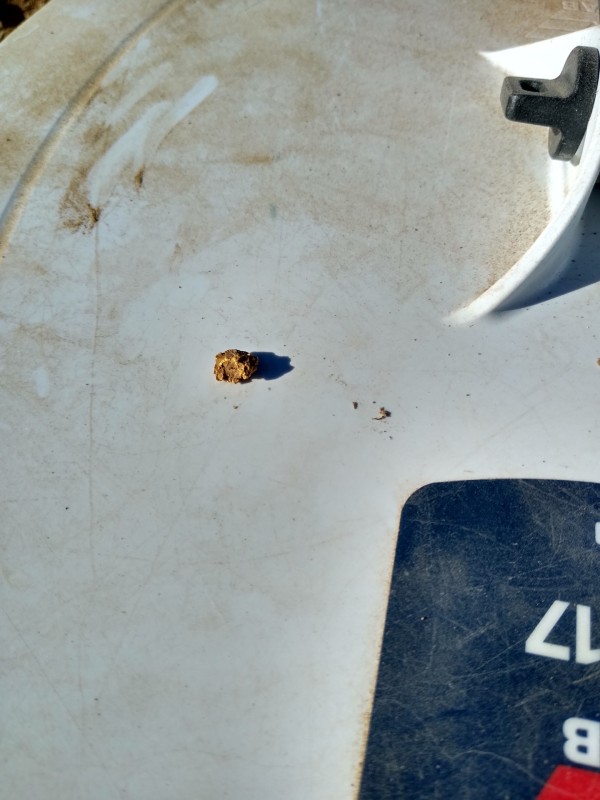
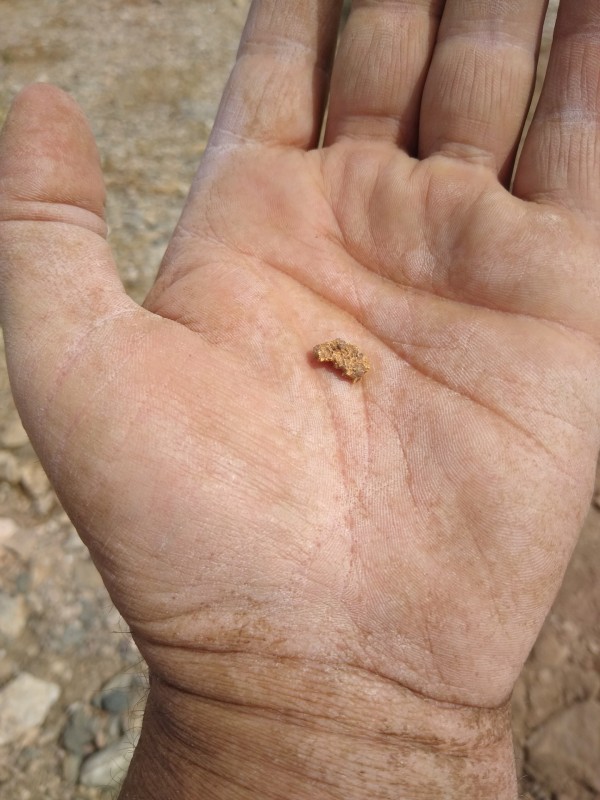
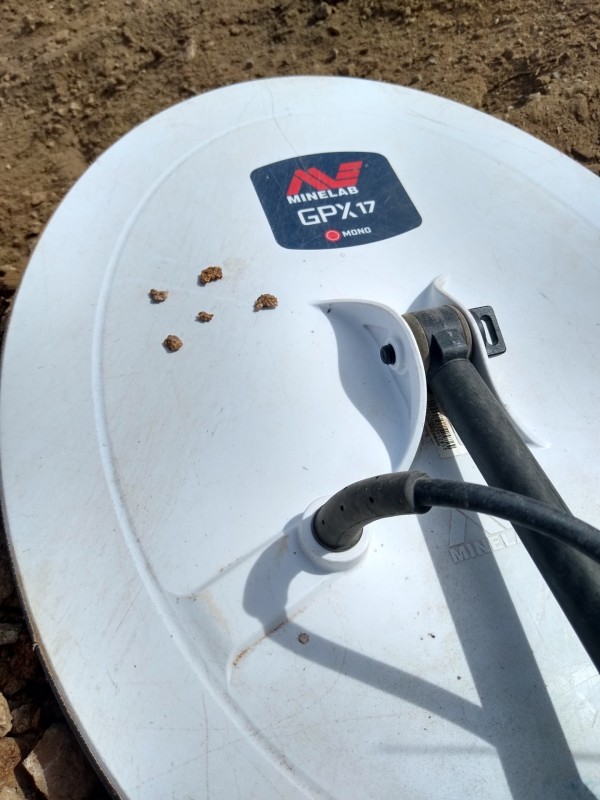
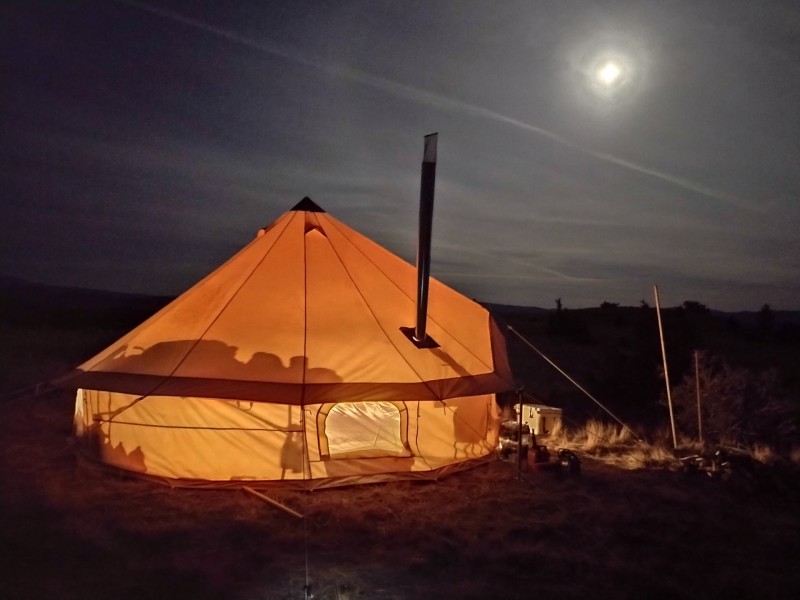
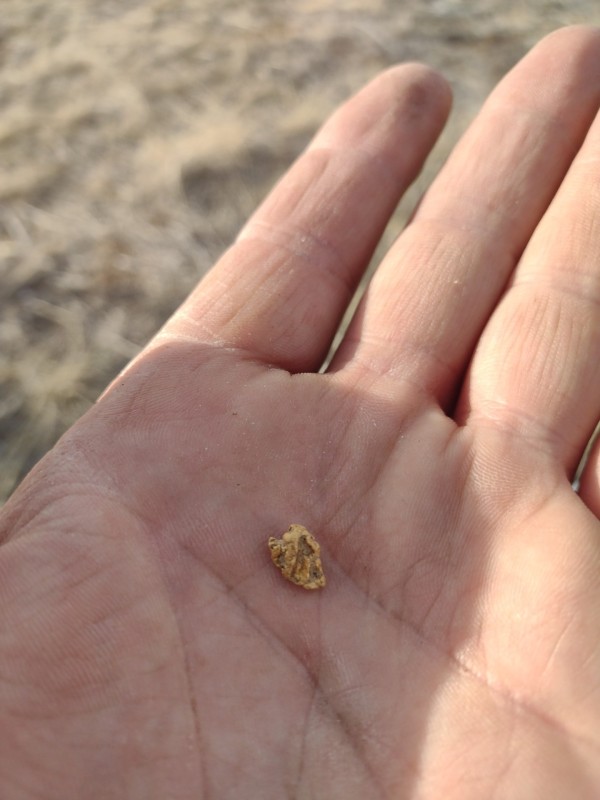
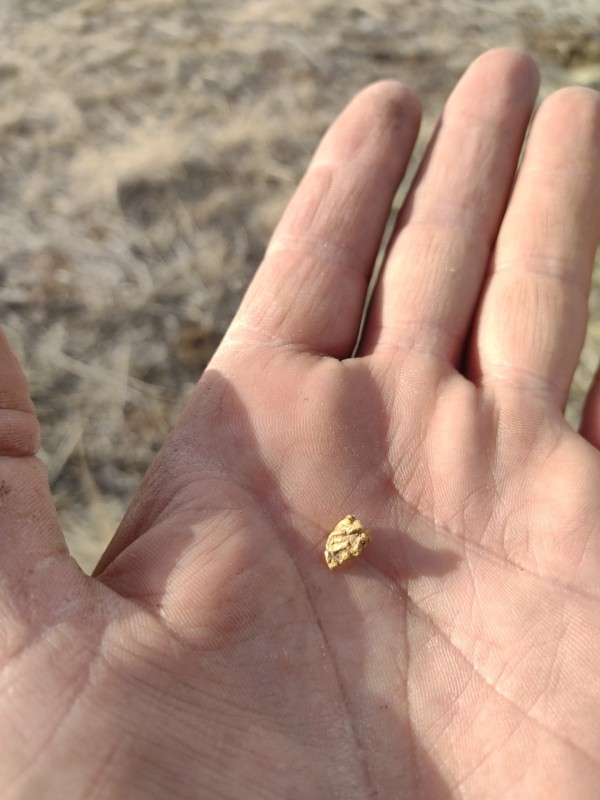
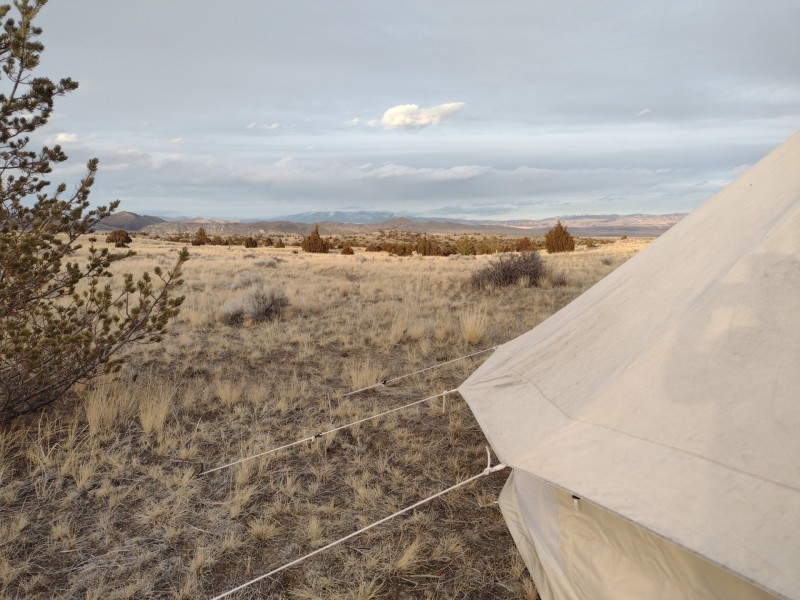


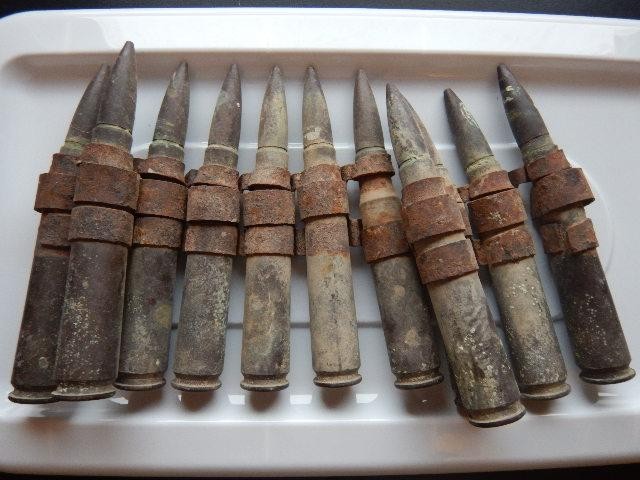
.thumb.jpg.95344db3aeef0a4c6c73420daa366191.jpg)
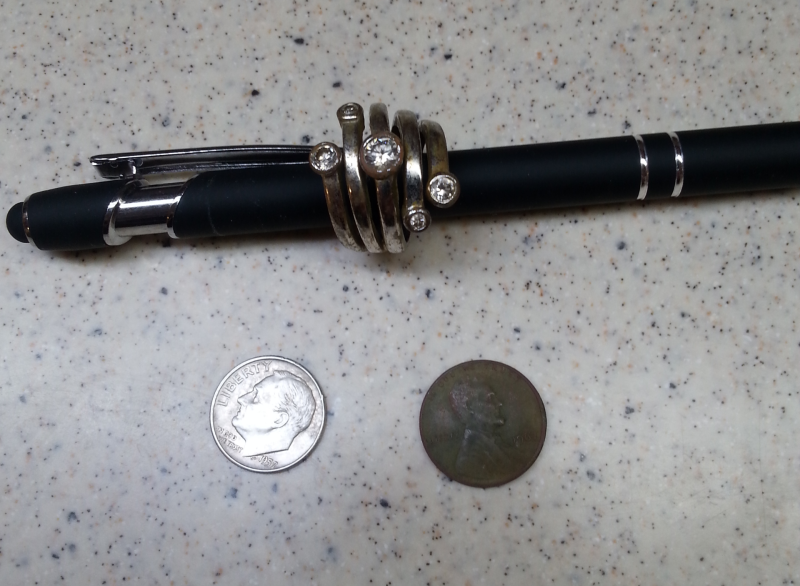

.thumb.jpeg.9fa63a4e70cd4d1a3c698abfd24d36b8.jpeg)
.thumb.jpeg.158f2276488a8f1658306546442f5c2f.jpeg)
.thumb.jpeg.6d017ac3e72ff7445dd3841b9d8a47dd.jpeg)
.thumb.jpeg.bf77d0fd822bd743bb6dbeed749d5d52.jpeg)
.thumb.jpeg.5f4a3696cb5242eafc73a1ec94828b76.jpeg)
.thumb.jpeg.54c24824e867d7fbbc40cb950e804f86.jpeg)
